Coffee varieties and taste characteristics of the relationship between coffee green beans coffee varieties and taste chart comparison
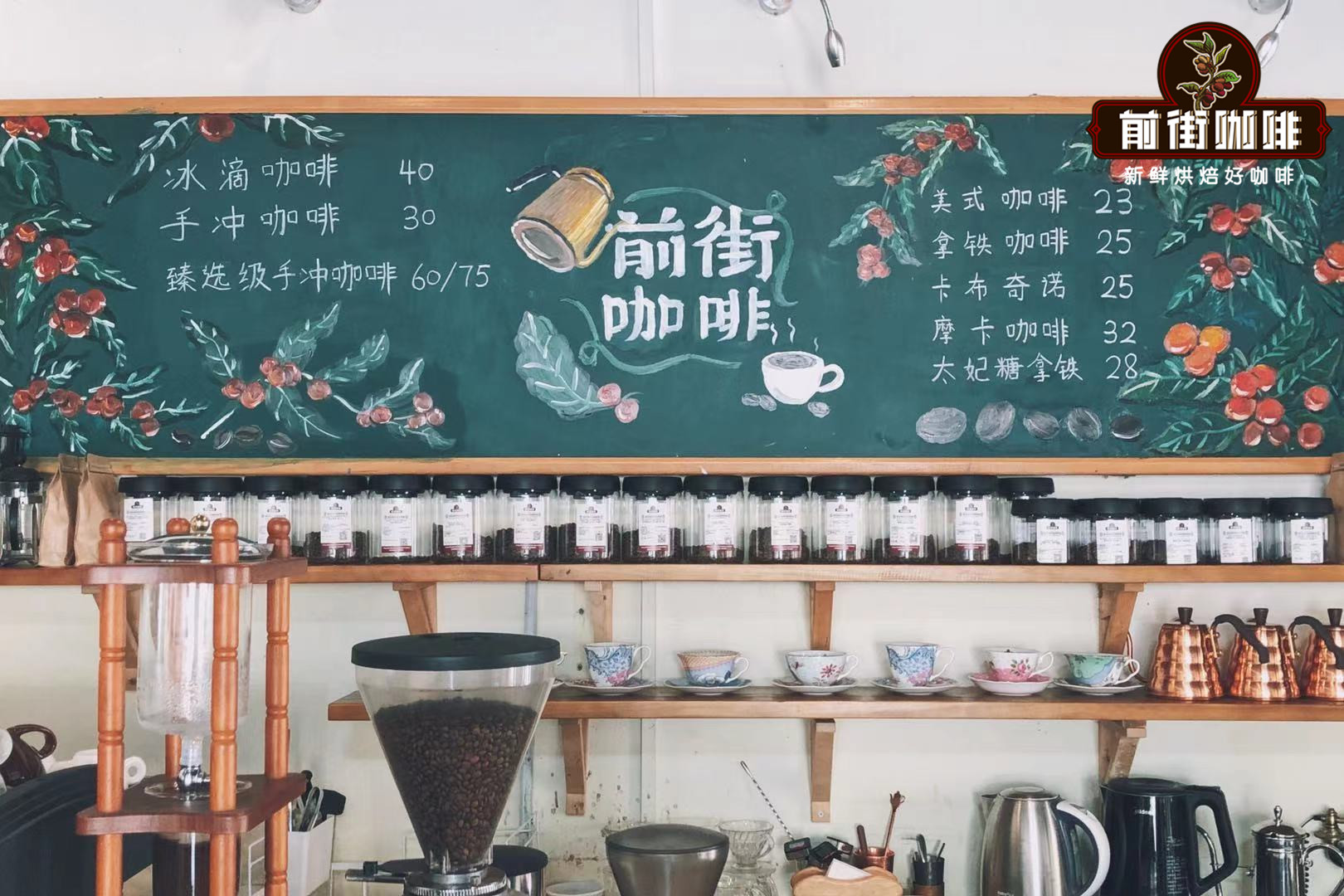
Professional coffee knowledge exchange more coffee bean information please follow the coffee workshop (Wechat official account cafe_style)
How many varieties of coffee beans are common on the market? What are the common ones? Qianjie Coffee summarizes and analyzes this, hoping to make everyone understand the basic concept of coffee more clearly, and Qianjie Coffee's original idea is to show you through words and pictures to really understand the nature of coffee. There are more than five hundred kinds of coffee trees and 6000 varieties. Today we will learn about coffee varieties and common coffee varieties.
There are four main coffee trees in the world, of which only two are of real commercial value and are planted in large quantities, and the quality of the coffee beans produced by other coffee trees is also higher than that of other coffee trees. The first is Arabica beans, the second is Robasta, and the other two are Liberian and Esselsa. If the variety of coffee is divided by biology, it can be divided into Arabica, Robusta and Liberica.
Generally speaking, Arabica is mainly used in individual coffee or boutique coffee, while Robusta is used to make instant coffee. Although Arabica can be defined as premium coffee and Robusta as secondary, it does not have to be classified in this way, and it is more appropriate to distinguish it according to its own favorite taste. In terms of taste, the United States and Japan drink light coffee made from Arabica more often, while Europe prefers Italian concentrate made from a mixture of Arabica and Robusta.
Arabica (Arabica): premium coffee beans with excellent flavor and aroma
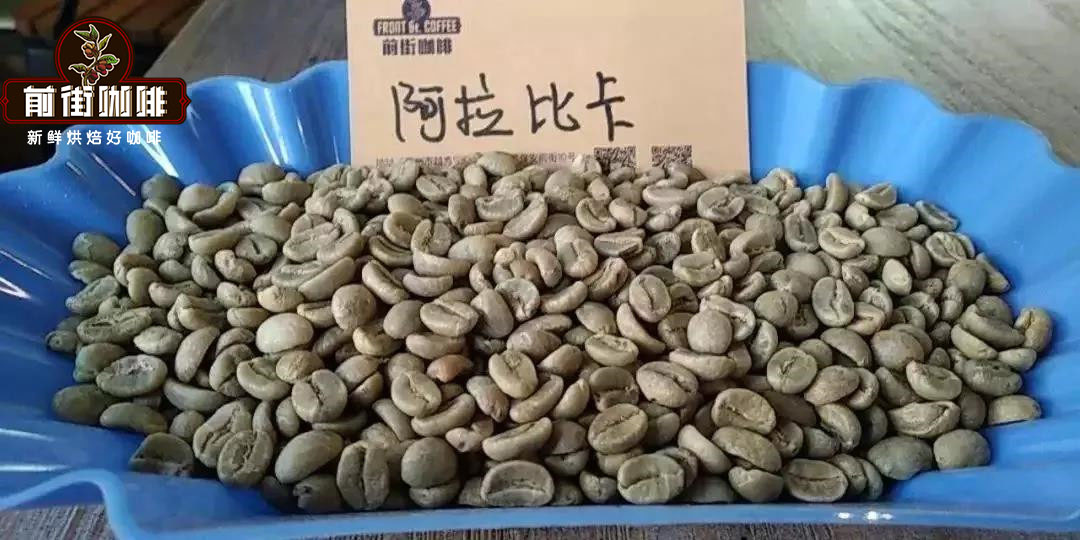
Arabica is the earliest variety discovered. Arabica is considered to be the best coffee variety and the most important variety in the world at present. Arabica is produced in Central and South American countries, Brazil, Colombia, Ethiopia, Tanzania, Yemen and Indonesia in Africa. Arabica usually grows between 2.5 and 4.5 meters. It can withstand low temperature but cannot frost. It has weak drought ability. It has large particles and excellent quality. It tastes fragrant and mellow. With a bit of acidity and a slight bitterness, it accounts for about 85% of world production.
Robusta: Strong acidity and intense taste
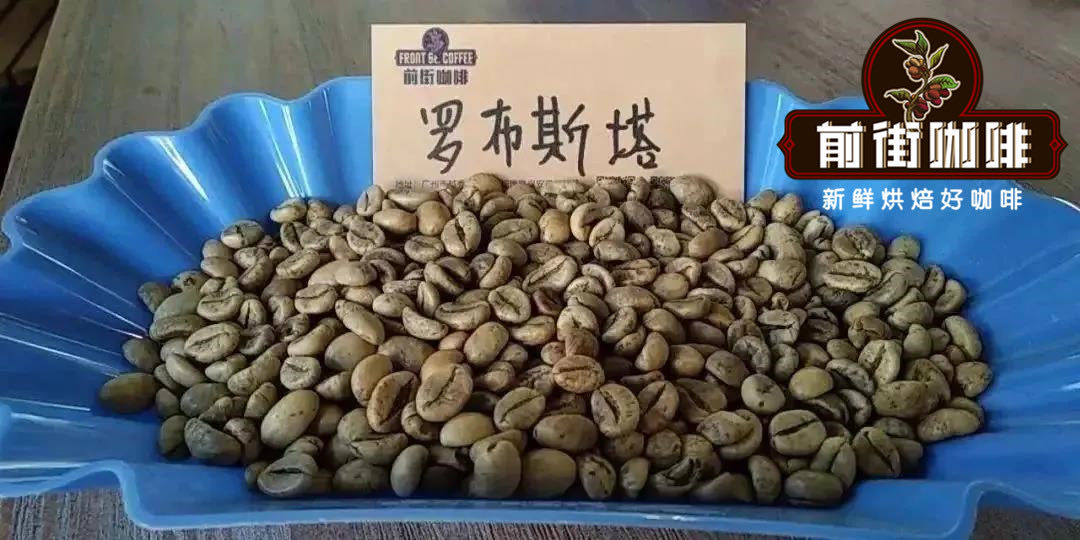
Due to the quality of coffee, the price of robusta coffee is half that of Arabica coffee in the market. Java, Congo, Uganda, Ivory Coast and other places in Indonesia are currently the main coffee producing areas of Robusta. Robusta is easier to grow on farms, has higher yields, is less sensitive to insects, has round and small particles, tastes slightly bitter, and still has aroma after cold, accounting for about 15% of the world's output. The appearance of Robusta is bulging oval, and raw beans are light brown or yellowish brown with grass green and yellow luster. Compared with Arabica varieties, the taste is more fragrant and lighter, with less sour taste and more bitter taste.
Liberia plus species
Liberia plus species found in Libya, beans are long, large particles, slightly pointed head, shaped like a boat, coffee generally grows in the slope of about 200m above sea level, is a very disease resistance and environmental adaptability of the tree species, the yield is very small, generally used for variety improvement, so Liberica coffee trees can be planted in subtropical areas compared with other tree species, poor quality, heavy acidity, high bitterness in taste, low aroma and alcohol But high concentration is its advantage, accounting for about 5% of the world's output.
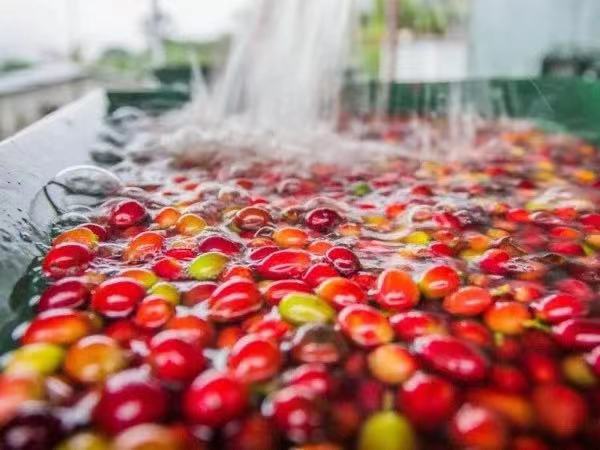
Esselsa species
Ethel sa is a variety discovered in 1904, which is native to the Charlie River Basin in Africa, with small fruit and high yield per plant, especially a drought-resistant variety. The product has a strong flavor, slightly bitter taste and less cultivation.
Coffee variety-Iron pickup Typica
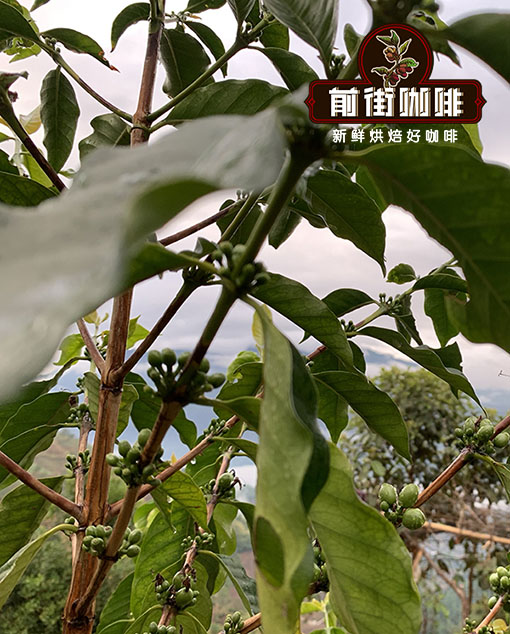
Tibica is a subvariety of Arabica coffee, which was originally grown in Martinique Island. Central America, Jamaica, Kona region of Hawaii, Papua New Guinea and East Timor are the main coffee growing places of Tibica. In order to obtain more coffee yield from high-quality Typica, Typica coffee varieties usually cross-breed with other species. Typica coffee is famous for its sweetness, and some of the best coffee in the world comes from the Typica coffee range, including Blue Mountain, Sumatra and Kona.
Typic raw beans are slightly warped at both ends and oval in appearance. The bean body is flat and thin from the side. Even if the altitude of the planting area is different, the thickness of the side of the raw bean will not be too different.
Sumatra Mantenin
The main producing areas of Indonesian coffee are Sumatra, Java and Sulawesi, of which "Manning" from Sumatra is the most famous. Lintong is also known as Sumatran Coffee, Lake Tawa at the north end can be called Aceh Coffee or Lake Tawa Coffee, and the area between Lindong Coffee and Lake Toba can be called Manning.
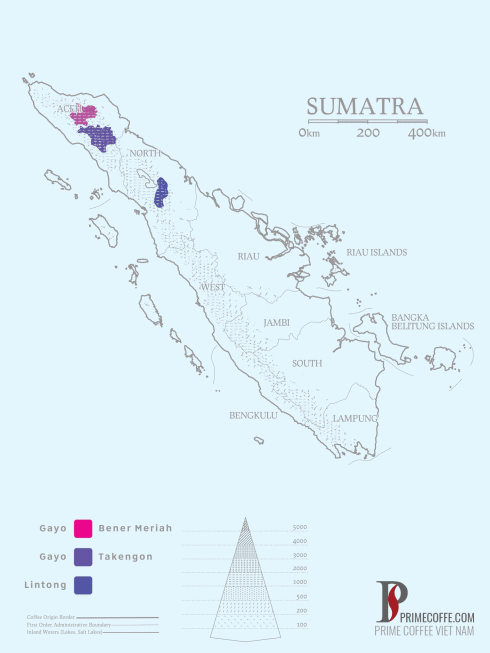
Mantenin has a strong taste, with a strong mellow and rich and lively sense of movement, neither astringent nor sour, mellow and bitter can be fully revealed. The appearance of Mantenin coffee beans is arguably the ugliest, but coffee fans say that the worse the Sumatran coffee beans are, the better, mellow and slippery they are.
Here show four kinds of Manning of Qianjie Coffee, namely, Lin Dong Manning, Golden Manning, Tiger Manning and Old Manning.
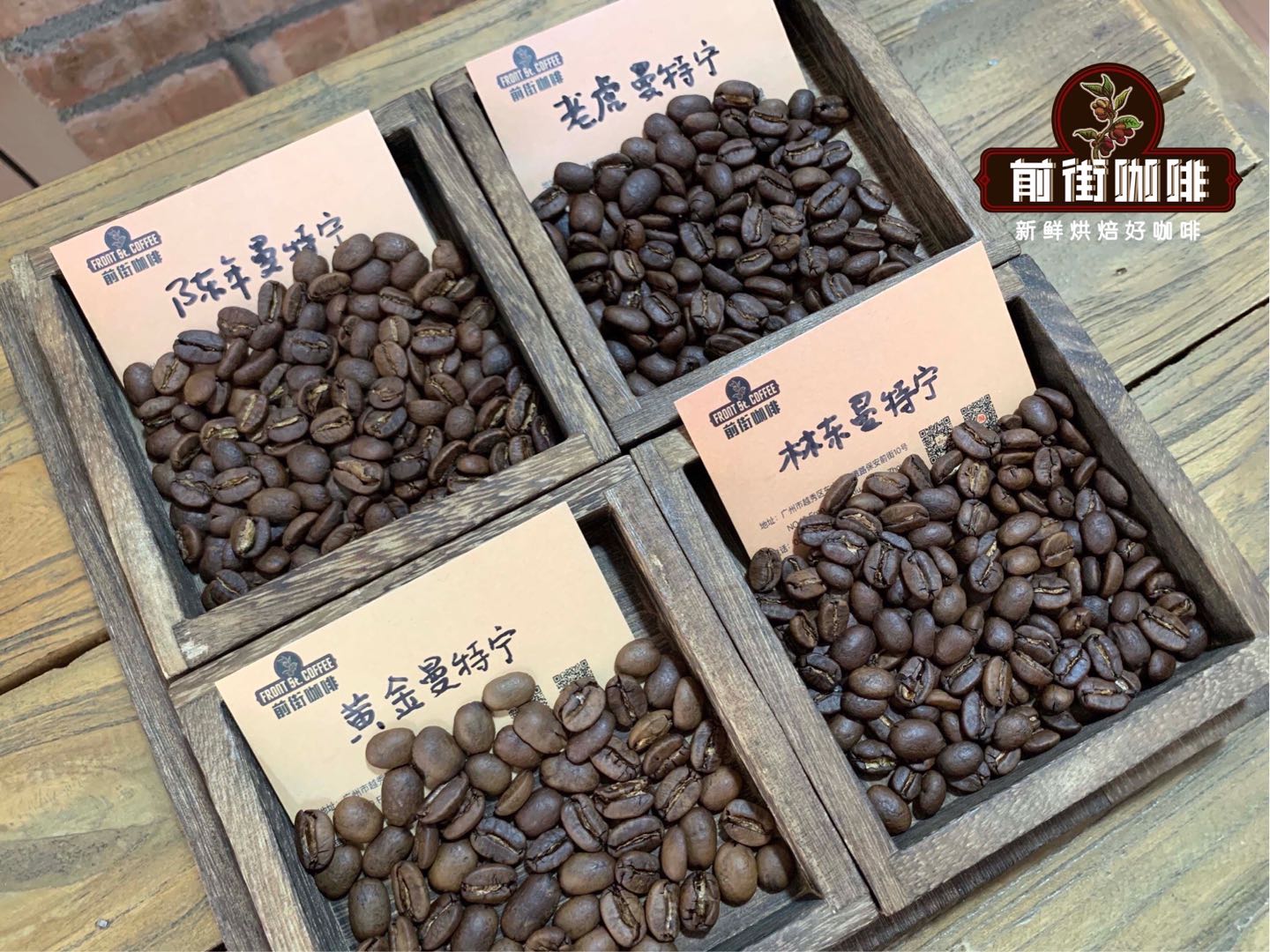
Lindonmantinen
Indonesian coffee is diverse in quality, but the term mantenin refers to tibeka or its variants grown in the mountains surrounding Lake Toba. Coffee gourmets around the world have commented: "Sumatra mantning coffee is the best quality coffee in the world." Mantenin coffee beans are larger in size and harder in quality, so they need to be carefully selected during coffee processing because of their more blemishes.
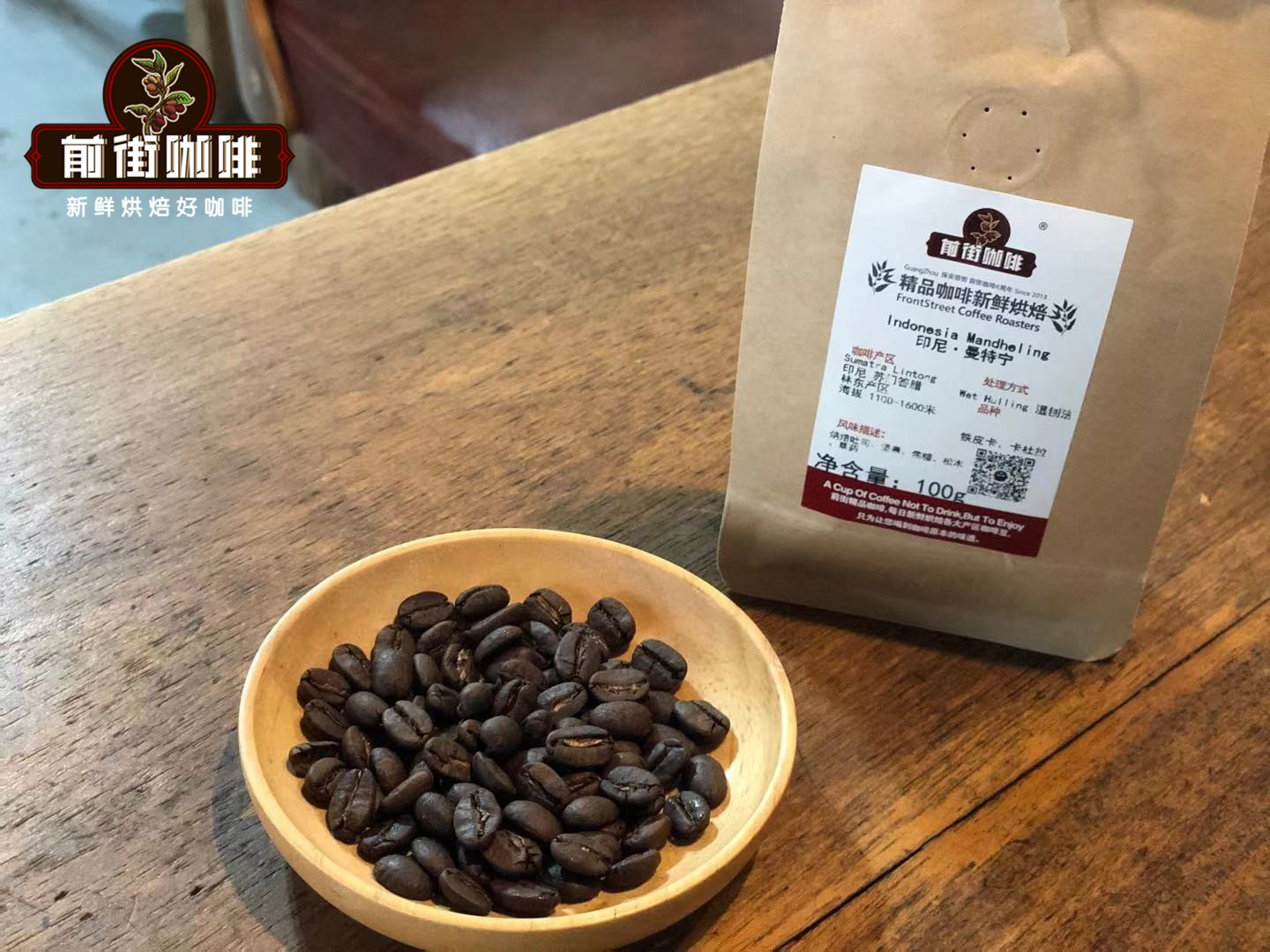
Mantenin Coffee is an essential blend of coffee, coffee flavor rich, sweet, pure bitter, mellow, with a little sweet and slightly sour.
Gold mantinin
Gold mantinin is produced in Lintong (Lintong) area in northern Sumatra, Indonesia. It is a high-grade mantinin, i.e. mantinin coffee treated with more delicate techniques. Coffee beans are picked by hand. Gold mantinin 19 mesh is manually selected four times to remove defective beans. The processed coffee beans are complete and consistent in size.
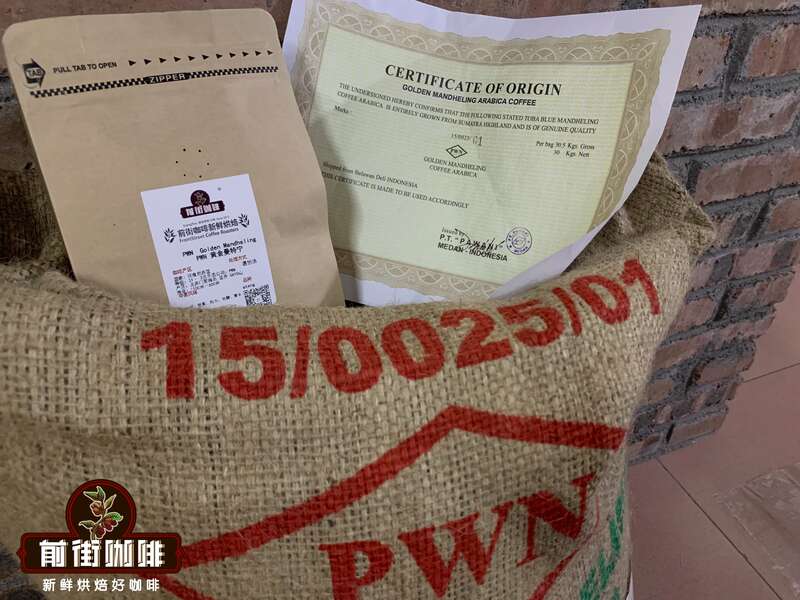
Gold manning taste is more mellow than ordinary manning flavor, full-bodied and full-bodied, although bitter, complex but distinct, golden manning is considered to be the most mellow coffee in the world.
Qianjie coffee chooses Golden Manning for brewing and tasting.
Indonesia gold Mantenin
Producing area: Lake Tawa, Sumatra
Altitude: 1100 m-1600 m
Variety: iron pickup
Treatment: wet planing method
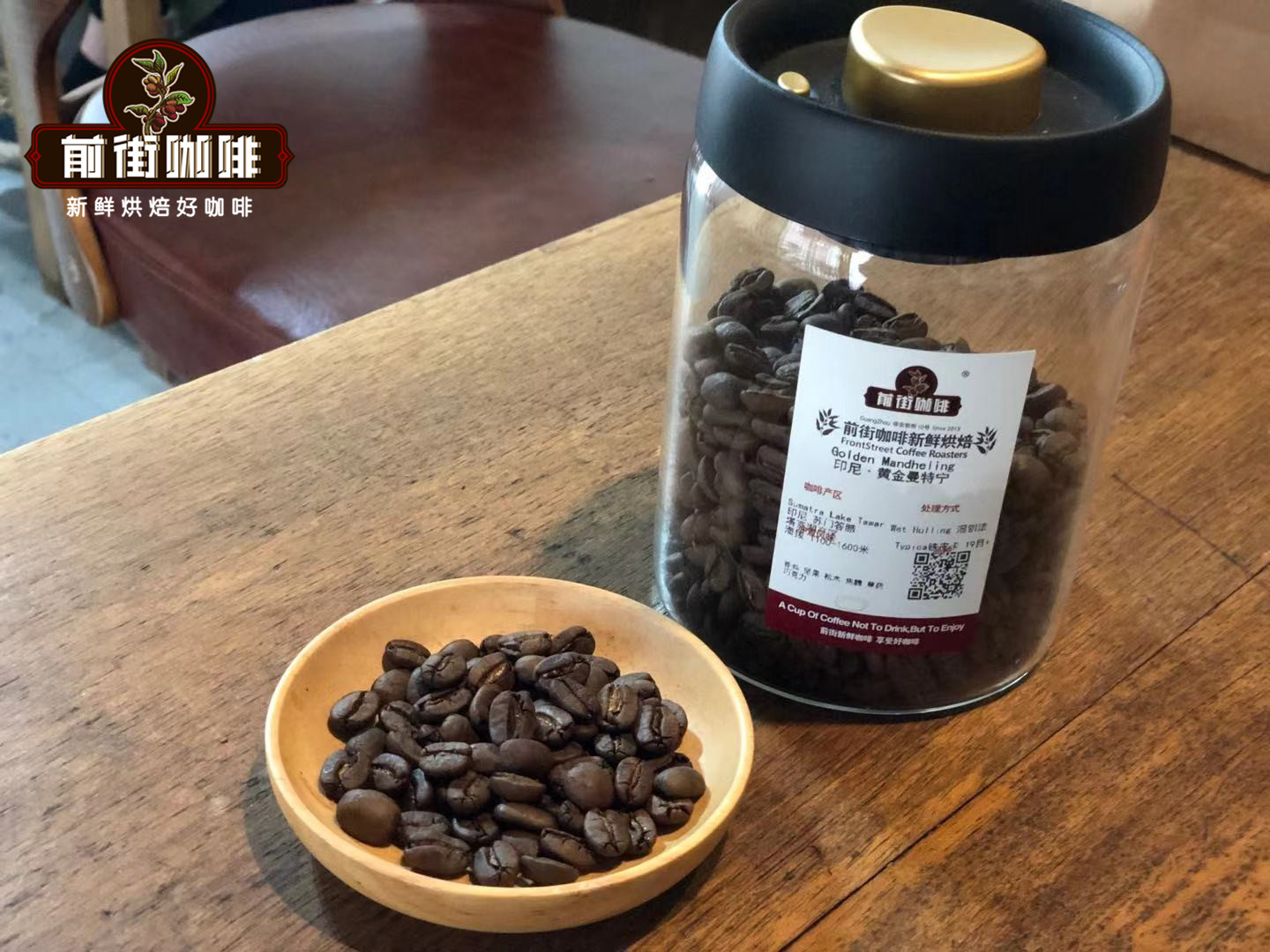
Brewing parameters:
Filter cup: KONO filter cup (for more mellow) Water temperature: 85-88℃(the higher the water temperature, the more bitter) Powder amount: 15 g Powder water ratio: 1:15 Grinding degree: moderate grinding
Brewing method: staged extraction. Steaming with 30g water for about 30s, injecting 95g of water in a circle around the center of small water flow, i.e. 125g of water in stages, continuing to inject water until 225g is finished when the water level drops and is about to expose the powder bed, removing the filter cup when the water level drops and is about to expose the powder bed, and extracting for 200 ".
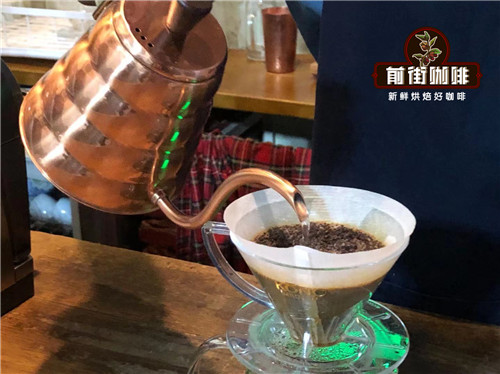
Cooking flavor: changeable, clean, balanced, long-lasting caramel sweet taste, rich and mellow taste, flavor: baked toast, pine, caramel, cocoa, slightly herbaceous soil flavor.
Tiger Manning
The main breeds of Indonesian tiger Mantenin are Kaddura, iron pickup and Sidikalong. Mantenin can only be called a tiger if the defect rate of tiger Mantenin is less than 4%.
Tiger Manning is well-balanced and clean, with obvious flavors of cream, dark chocolate and nuts.
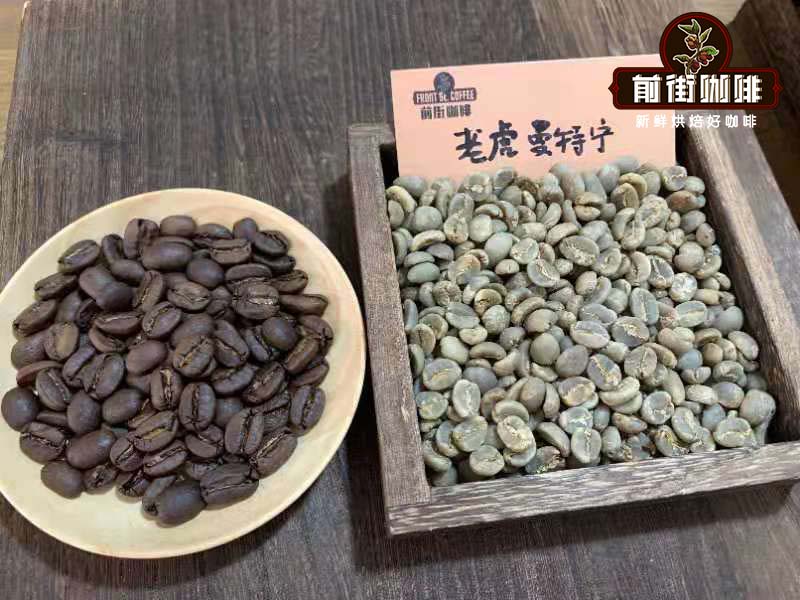
Old Manning
Indonesia's aged beans are most famous for Mantenin and Java Old Brown. After a certain degree of treatment and long-term storage, the sour ingredients of coffee beans are precipitated and converted into sugar, making the coffee more round. Aged Mantenin tastes so sweet that it is most suitable for making individual or espresso.
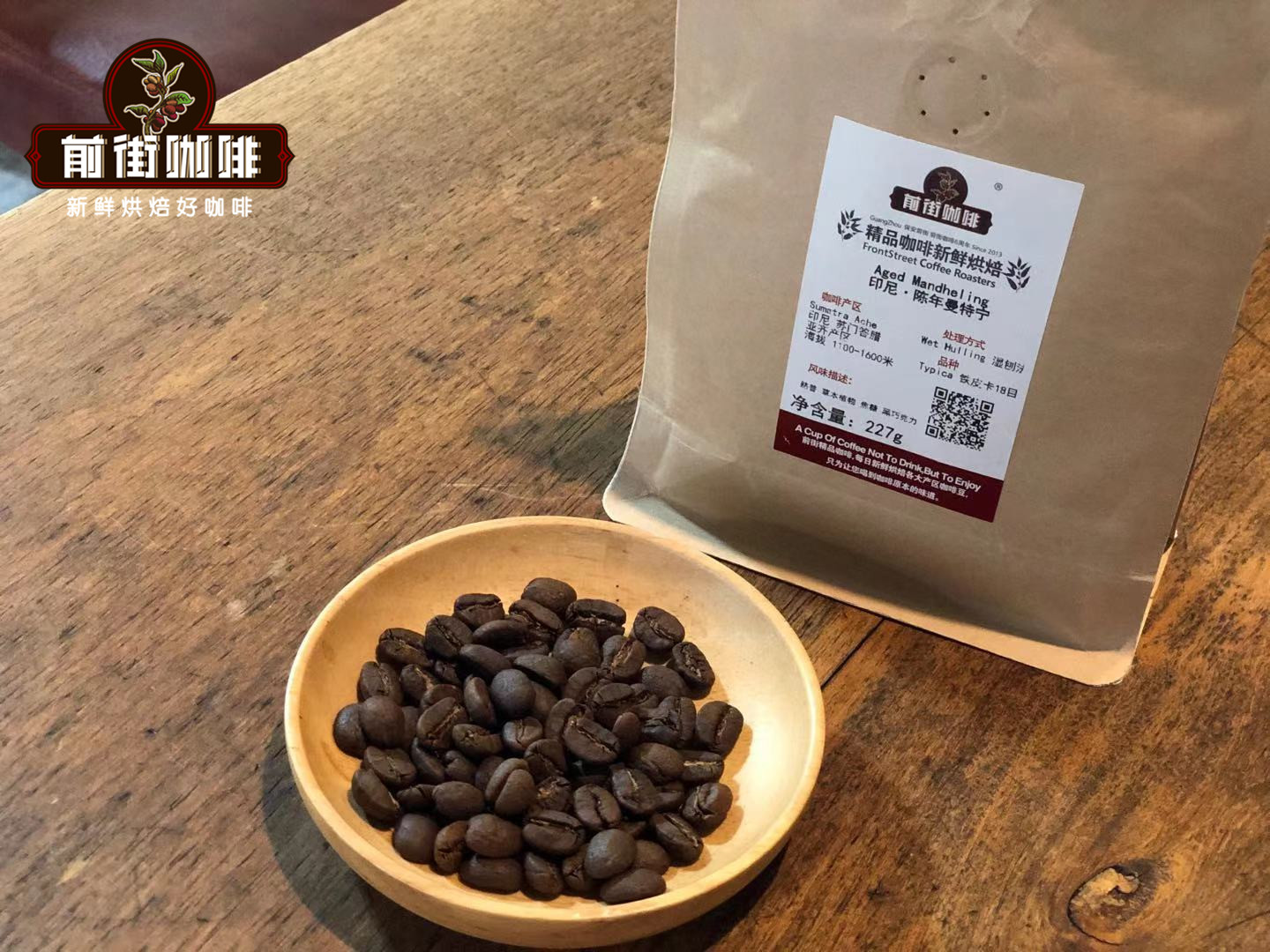
The four kinds of Mantenin coffee beans introduced above have the most in common: the coffee beans are treated with wet planing, which forms the unique coffee flavor of Sumatran coffee, and the coffee taste is mellow and strong.
A variety of iron pickup-- Blue Mountain
Blue Mountain (BlueMountain): blue Mountain coffee beans are the most expensive coffee, coffee flavor is clean and fragrant, is one of the sweetest coffee in the world. The history of Jamaican coffee can be traced back to the 18th century. The British introduced coffee trees to Jamaica and planted coffee in the Blue Mountains, which is divided into high-altitude Jamaican Blue Mountain Coffee, Jamaican Alpine Coffee and Jamaican Coffee. Different grades also determine different prices.
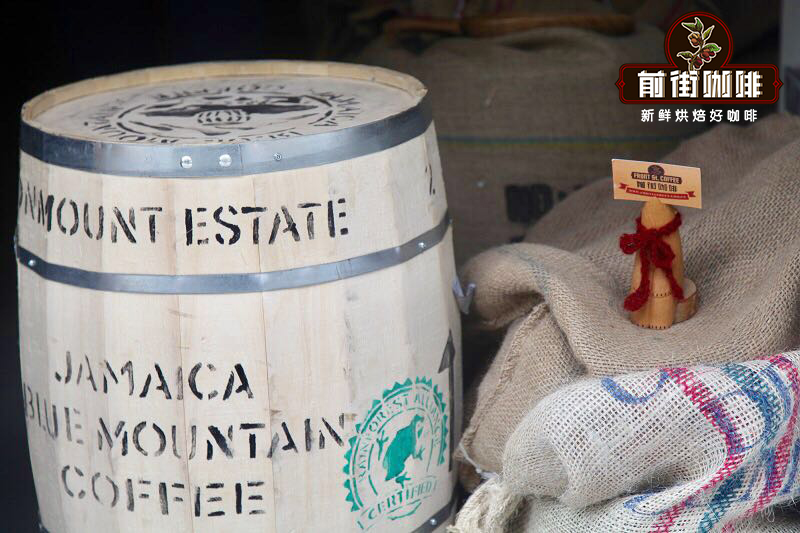
Jamaica Blue Mountain Coffee (JamaicaBlue Mountain Coffee)
Among them, Blue Mountain Coffee and Alpine Coffee are each divided into four grades. From top to bottom in terms of quality, NO.1, NO.2, NO.3 and PB,PB are round beans. According to CIB standards, only coffee grown above 666m above sea level is called Jamaican Blue Mountain Coffee.
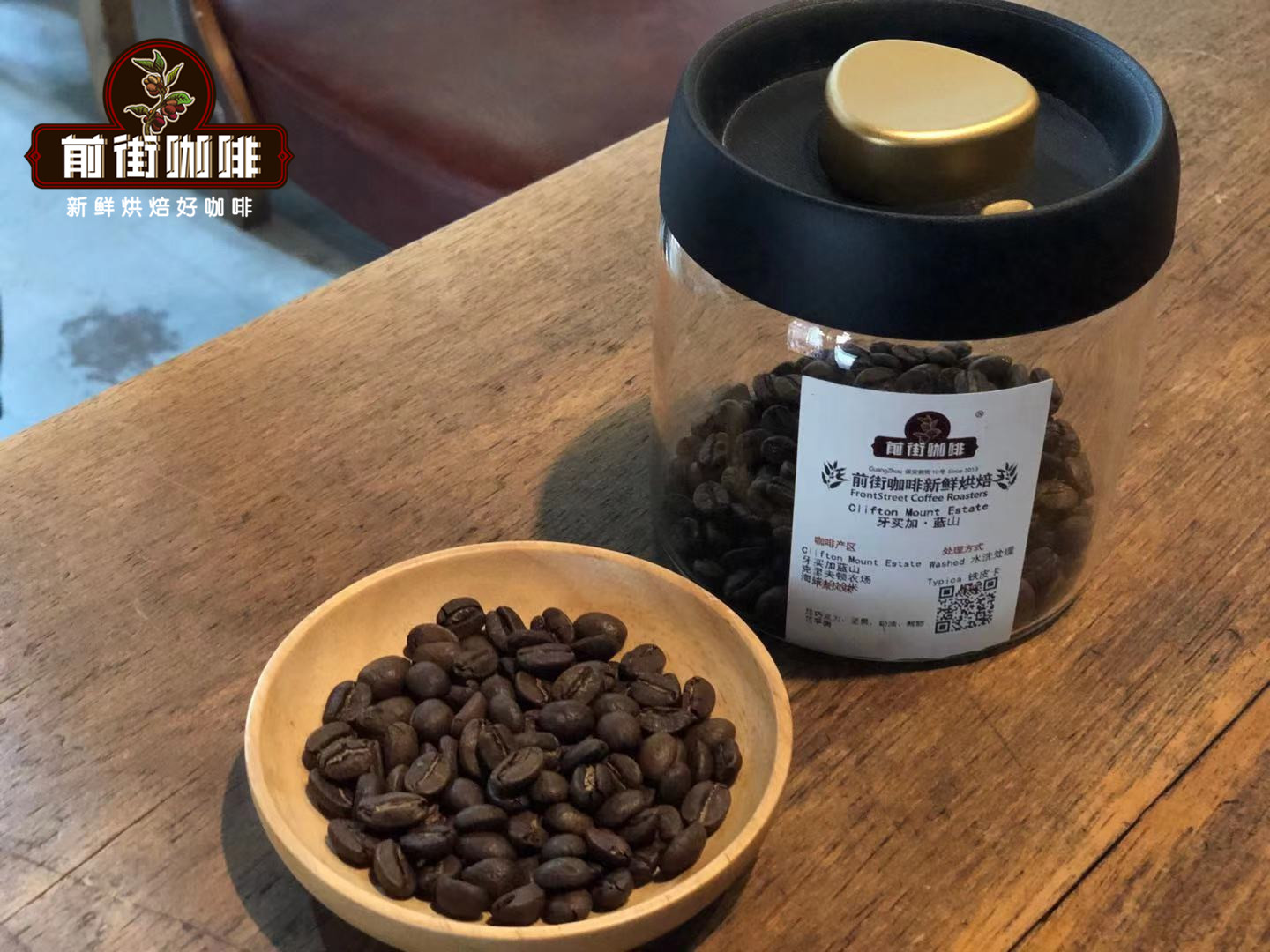
Jamaican Blue Mountain Coffee
Manor: Clifton Manor
Altitude: 1310 m
Variety: iron pickup
Treatment: washing
Cooking parameters:
Filter cup: KONO filter cup water temperature: 87-88 ℃ powder content: 15g powder / water ratio: 1:15 grinding degree: medium grinding
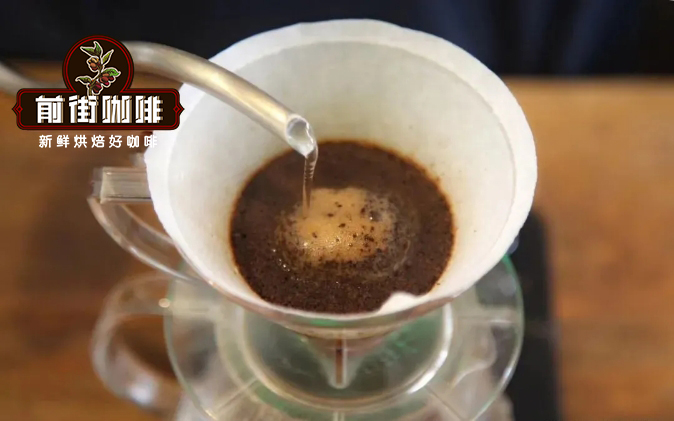
Brewing and cooking techniques:
Staged extraction uses 30 grams of water for steaming, the steaming time is about 30 seconds, 95 grams of water is injected around the center of the small flow, that is, 125 grams of water is injected into sections, and the water level drops to the end of 225 grams when the powder bed is about to be exposed. Remove the filter cup when the water level is about to expose the powder bed, and (the time of steaming starts) the extraction time is 2 grams.
Brewing flavor: blue Mountain Coffee has a balanced taste, none of which is strong. It is precisely because of the mellow taste and pleasant aroma, and has a lasting aftertaste, sweet feeling.
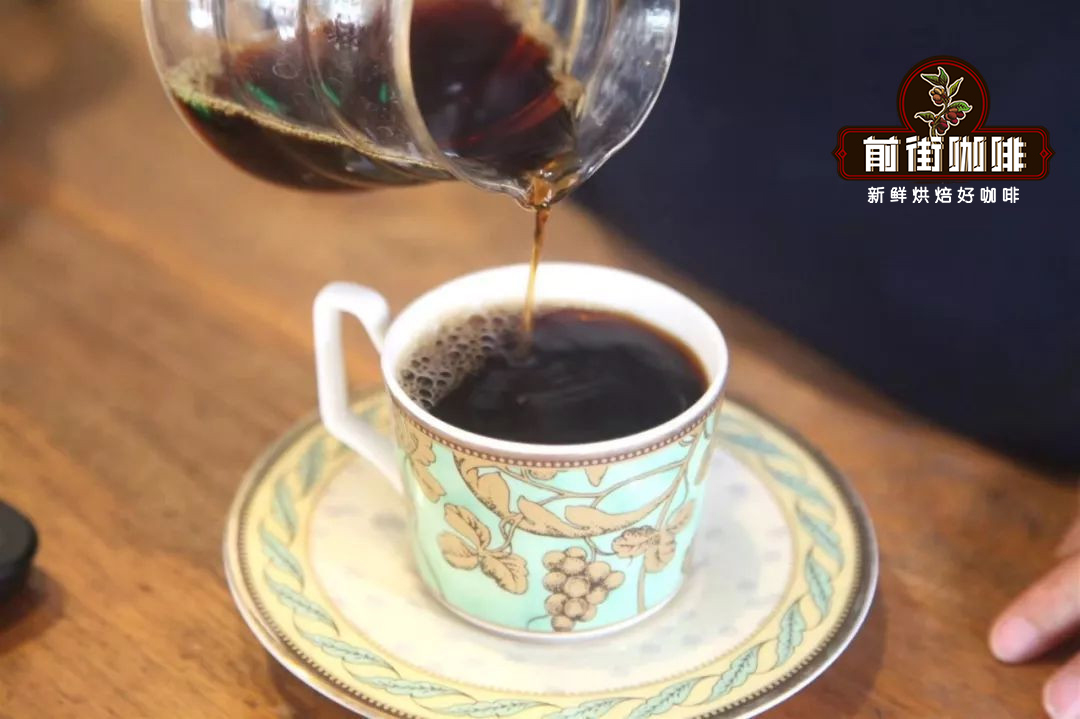
Jamaica Alpine Coffee (Jamaica High Mountain Supreme Coffee Beans)
The coffee produced below 666 meters in the Blue Mountain area of Jamaica is called Alpine Coffee, which is second only to Blue Mountain Coffee in quality. it is called the brother variety of Blue Mountain Coffee by industry insiders. Jamaica Blue Mountain caffeine produces very little, so if you want to taste Jamaican coffee, then Jamaican Alpine Coffee is your best choice.
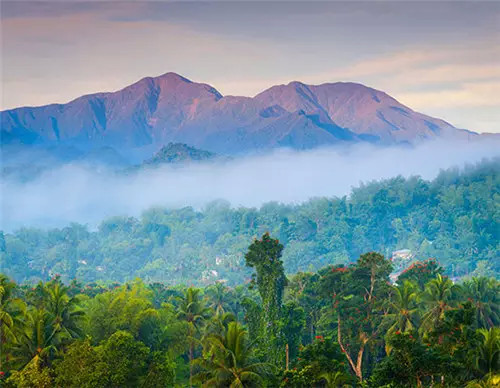
Jamaica Coffee (Jamaica Prime Coffee Beans)
Coffee is grown outside the Blue Mountains and is called Jamaican coffee. It turns out that people in the coffee industry in China generally have a wrong understanding that only coffee grown in the Blue Mountains above 1800 meters above sea level can be called Blue Mountain Coffee. In fact, there is only one manor on the top of the Blue Mountains above 1800, that is, Amber, which is of Chinese descent. The owner of the manor is surnamed Lyn (Lin). Originally from Guangdong, China, the manor has a land area of only 30 hectares and its output is very small. Blue Mountain Coffee is mainly distributed in 5 mountainous areas such as John Crow,St.John's Peak,Mossman's Peak,High Peak,Blue Mountian Peak in the Blue Mountains.
A variety of iron pickup-- Kona, Hawaii
Connor (Kona)
Because of the favorable geographical environment, the coffee varieties grown in Kona region of Hawaii are not only of guaranteed quality, but also have a rich flavor, with moderate citrus acid, high but mild thickness and clean taste. The coffee grown in Kona area is regarded as "the most beautiful coffee bean in the world".
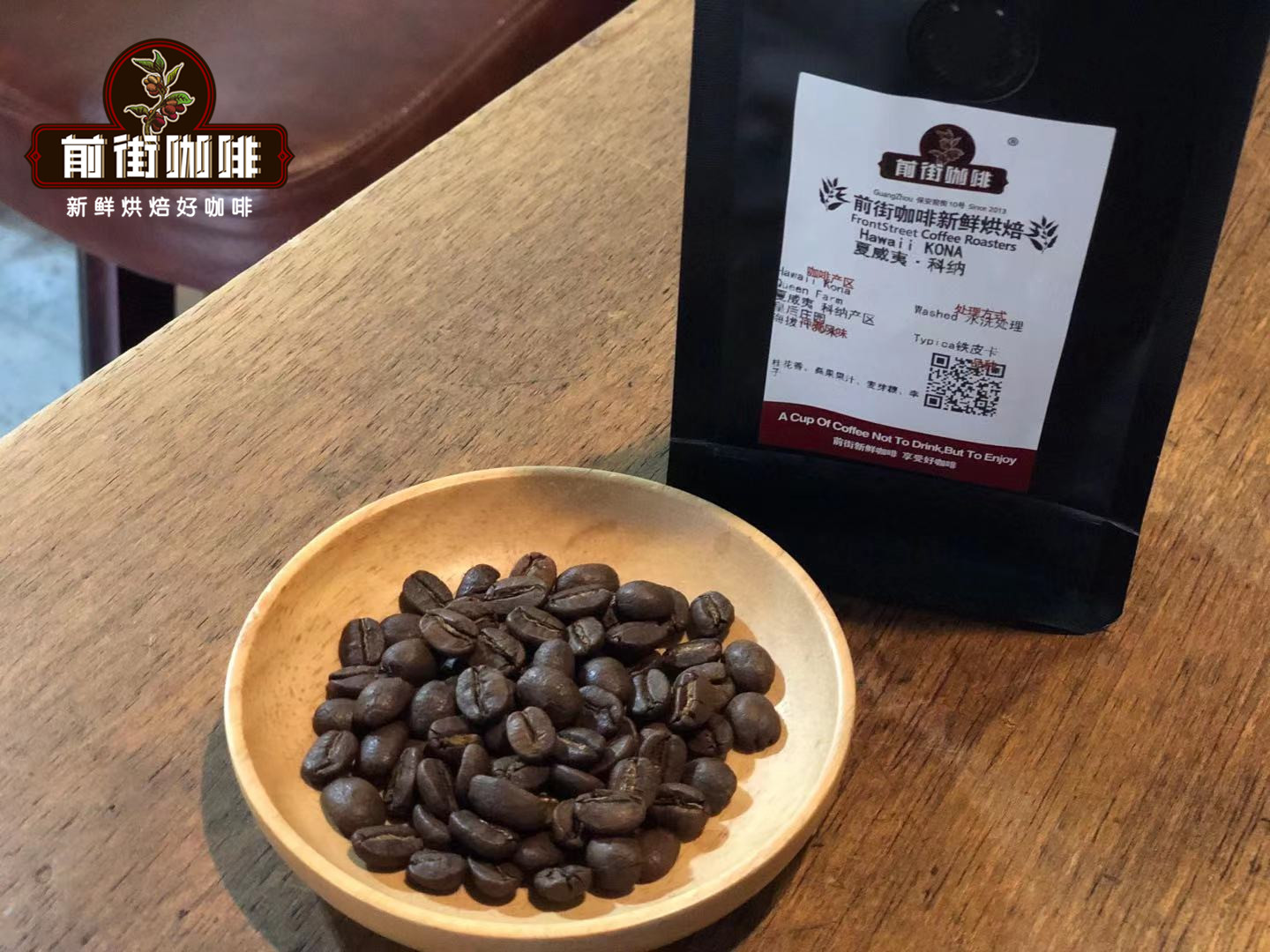
Kona, Hawaii
Producing area: Kona producing area
Manor: Queen's Manor
Altitude: 1100m
Variety: iron pickup
Treatment: washing
Cooking parameters:
Filter cup: KONO water temperature: 87-88 ℃ powder quantity: 15g powder / water ratio: 1:15 grind degree: moderate grinding and cooking technique: staged extraction is steamed with 30g water for about 30 seconds, the small flow center is injected with 95g water around the circle, that is, 125g water is divided into stages, and when the water level is about to expose the powder bed, continue to inject water to the end of 225g, and remove the filter cup when the water level is about to expose the powder bed. (the time of steaming starts) the extraction time is 2: 39. 00 ".
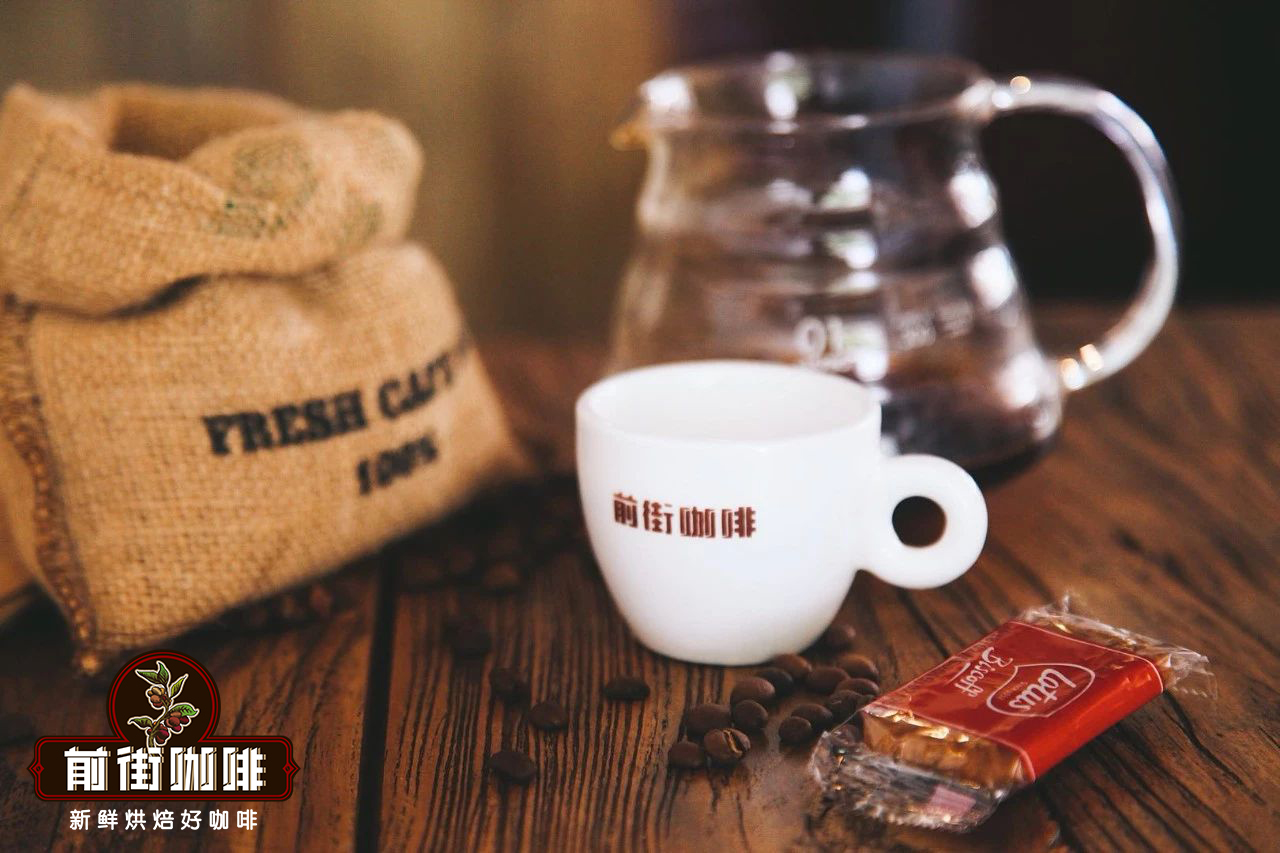
Cooking flavor: walnut, caramel, berry, Brin, plum, nut, cream, clean and rich as a whole.
A variety of iron pickup-- elephant bean (Maragogype)
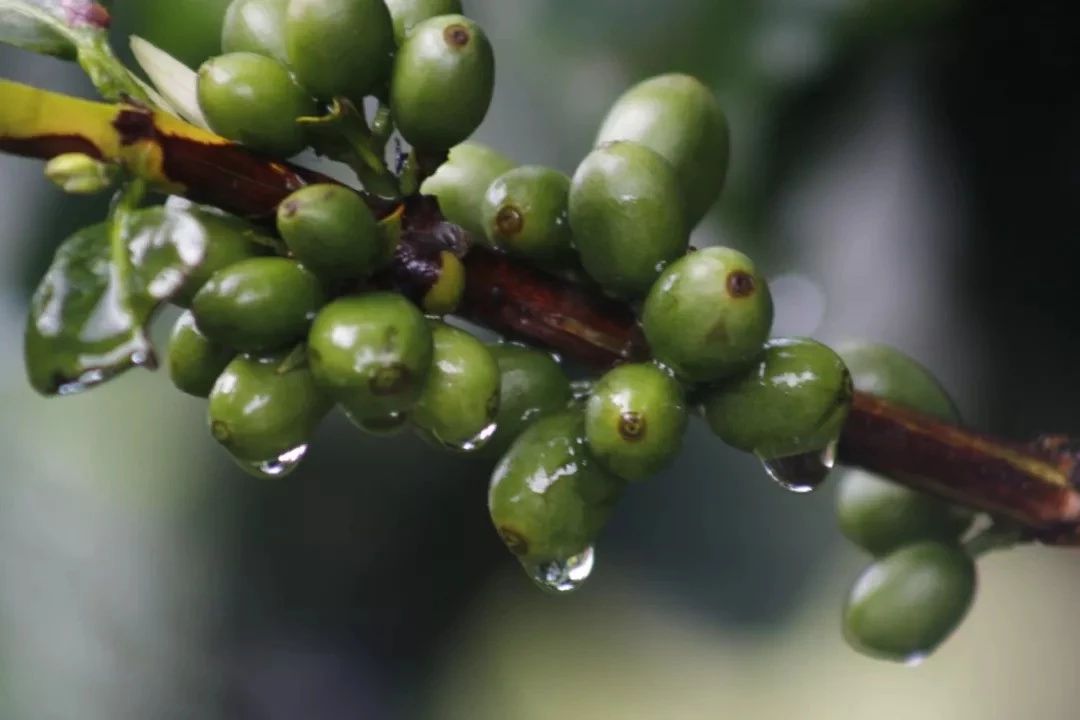
A mutant of Typica having large long twisted fruit and long internodes and large leaves. The yield is relatively low, and it was first discovered in 1870 in the Maragogype bean-producing area of the state of Bahia in northeastern Brazil that the bean body was at least three times larger than the average Arabica, hence the name. The taste of elephant bean is poor in low altitude area, but it has better flavor at high altitude, mild sour taste and sweet fragrance.
A variety of iron pickup-- Pacamara
Pacamara (Pacamara)
The hybrid variety between Pacas (Pacas) and elephant bean (Maragogype) has a large bean body, which is second only to elephant bean. It is an excellent variety produced in El Salvador in the 1950s, and its cup test results are good in recent years.
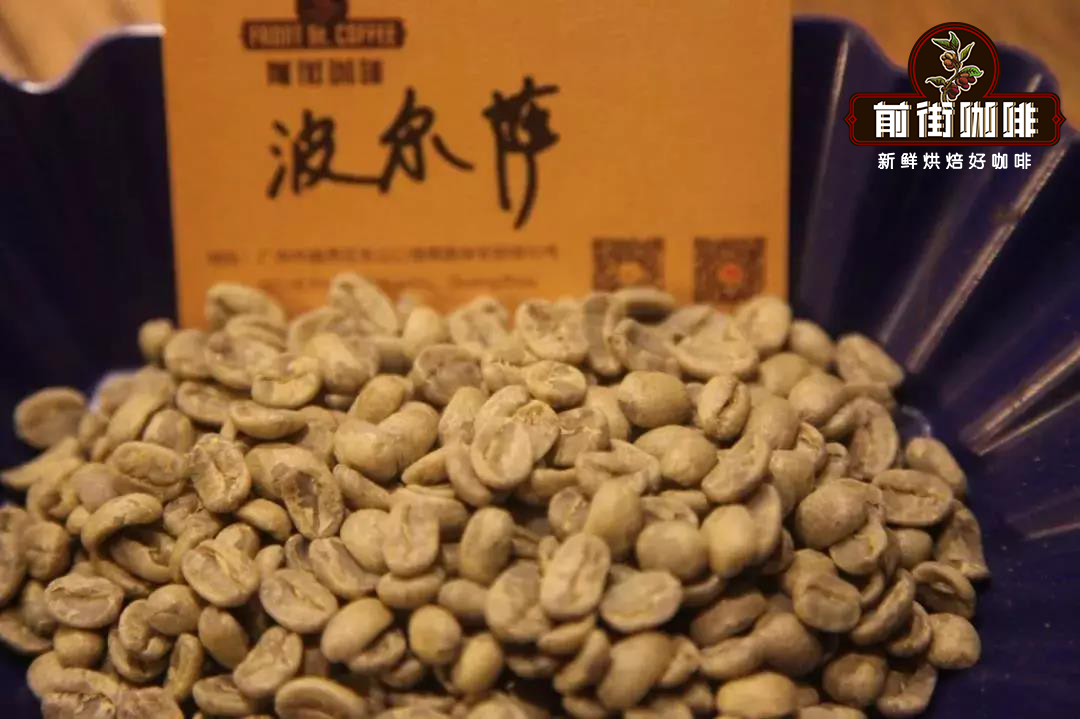
Chateau Polsa, Guatemala
Producing area: Vivette Nanguo
Manor: Polsa Manor
Altitude: 1500 m
Variety: Pacamara
Treatment: washing
Cooking parameters:
Filter cup: V60 water temperature: 90-92 ℃ powder quantity: 15 g powder / water ratio: 1:15 grind degree: moderate grinding and cooking technique: staged extraction is steamed with 30 g water for about 30 seconds, 95 g water is injected around the center of small flow, that is, 125g water is sectioned, and when the water level drops, the water injection is continued to the end of 225g, and the filter cup is removed when the water level is about to expose the powder bed. (the time of steaming starts) the extraction time is 2: 39. 00 ".
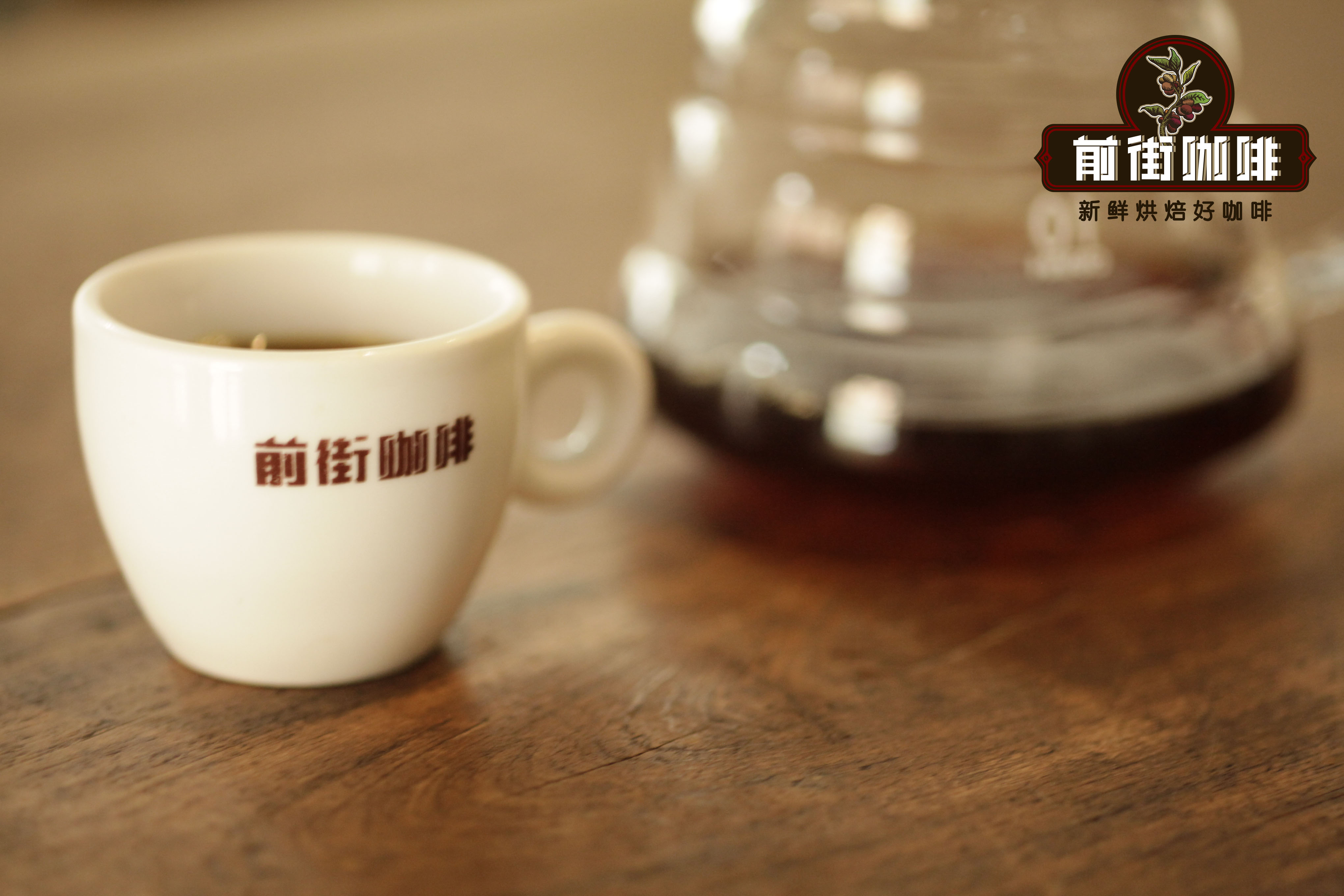
Cooking flavor: sweet and sour and soft, with sour flavors of lemon, passion fruit, plum and plum, with a brown sugar finish.
Iron pickup variant-- Kent
Kent (Kent)
The hybrid variety of Tibica found in India has high yield and strong disease resistance, but it has not achieved good results in the cup test.
Bourbon Coffee-bourbon species
Bourbon species originated in Ethiopia, the natural mutant variety of Bourbon, originally appeared in Reunion/ Reunion Island, was first recorded in 1947, Burundi, Rwanda and South America are the main coffee growers in Bourbon, although this variety is similar to tin card species, bourbon species are stronger and more productive, have lower caffeine content but shorter plants, lower disease resistance, and are more prone to leaf rust.
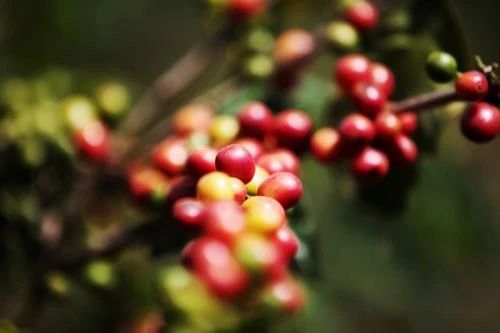
Bourbon, the second species caused by the Typica mutation, is the oldest coffee variety in existence, and the green fruit appears bright red when it is ripe.
Gene mutant-bourbon variety
The bourbon gene mutants include pointed bourbon (BourbonPointu), Kenyan "SL28" and "SL34", yellow bourbon (Bourbon Amarello), pink bourbon, Mocha, Pacas (Pacas) and Vera Saatchi.
Bourbon Coffee-Red bourbon
After the red bourbon general coffee tree blossoms and bears fruit, the color change of the coffee fruit is: green > turn yellowish > turn slightly orange > turn mature red > turn more ripe dark red, so some people also call it [red bourbon], in fact, red bourbon, that is, what we call bourbon species. Bourbon planted at high altitude usually has a better aroma, while the acid is brighter and even tastes like red wine.
Generally speaking, bourbon is a coffee tree that belongs to a branch of Arabica species, generally bearing red fruit, called red bourbon, in addition to yellow bourbon, orange bourbon, yellow bourbon relatively low yield, but better quality.
Bourbon Coffee-Yellow bourbon
Yellow Bourbon, Huang bourbon, the mature consequence is actually yellow, was first found in Brazil, and now mainly grows in Brazil. It is generally thought that it may have been mutated by a cross between a bourbon with red fruit and a variety of iron pickup with yellow fruit called "Amerelo de Botocatu".
Among the many varieties of coffee in Brazil, yellow bourbon is one of the most outstanding varieties. Generally speaking, yellow bourbon changes from green to yellow to red, but the appearance of yellow bourbon only stays in yellow. The yellow bourbon, which grows at high altitude and is sun-treated, has an excellent flavor.
Taste characteristics: sweet and smooth fruit sweetness, obvious nutty flavor, balanced and supple acidity, weak and clean bitterness, rich chocolate aroma and nutty flavor, bright and fresh taste.
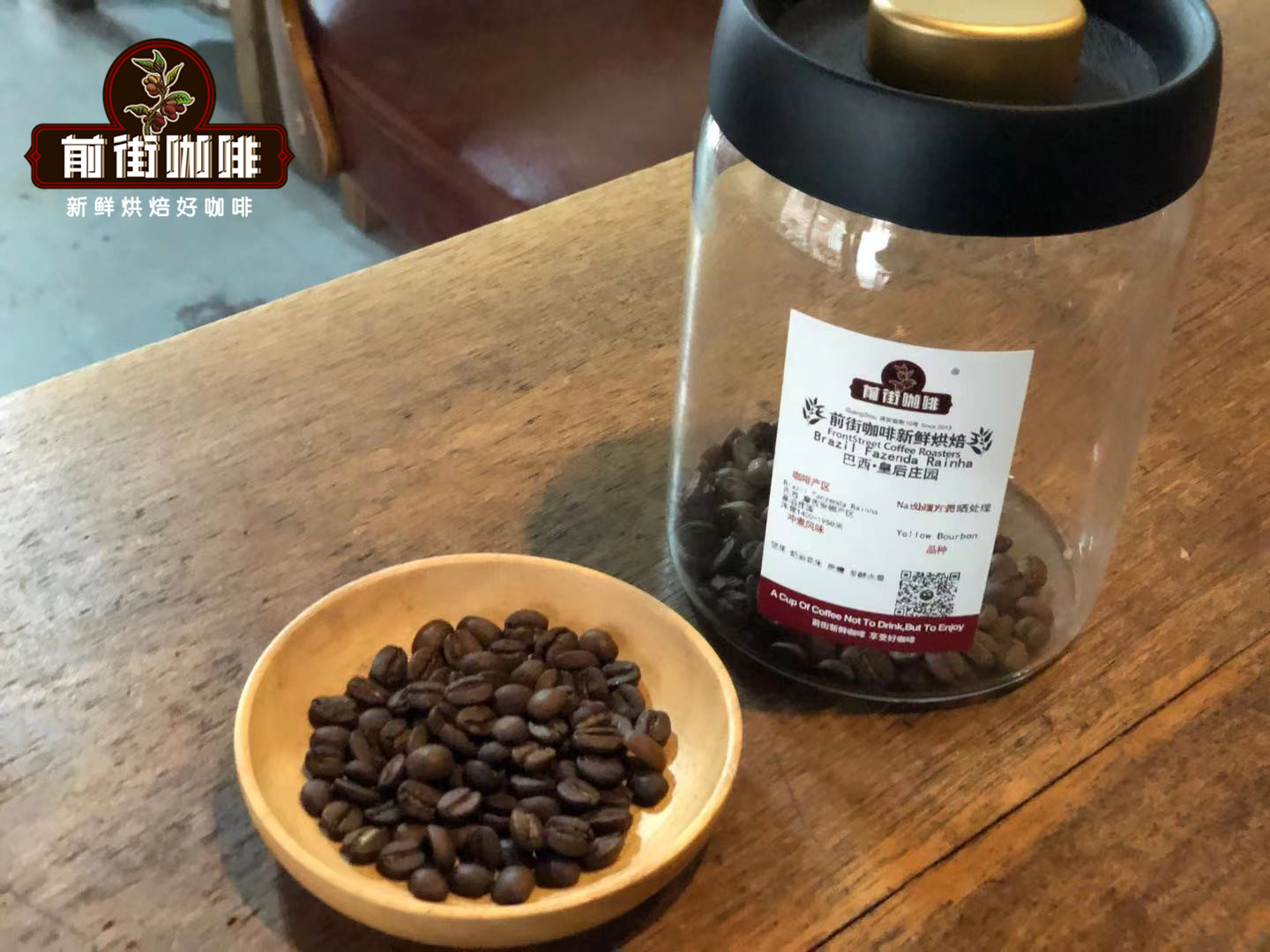
Brazilian Queen's Manor Yellow bourbon Coffee
Producing area: Morgiana producing area, Sao Paulo State
Manor: Queen's Manor
Variety: yellow bourbon
Treatment method: half-sun treatment
Altitude: 1400-1950m
Cooking parameters:
Filter cup: V60 water temperature: 90-92 ℃ powder quantity: 15 g powder / water ratio: 1:15 grind degree: moderate grinding and cooking technique: staged extraction is steamed with 30 g water for about 30 seconds, 95 g water is injected around the center of small flow, that is, 125g water is sectioned, and when the water level drops, the water injection is continued to the end of 225g, and the filter cup is removed when the water level is about to expose the powder bed. (the time of steaming starts) the extraction time is 2: 39. 00 ".
Cooking flavor: sweet beans, clean, half-sun use will make her slightly bright acidity but also good with the sweet knot, some even have tropical fruit aromas.
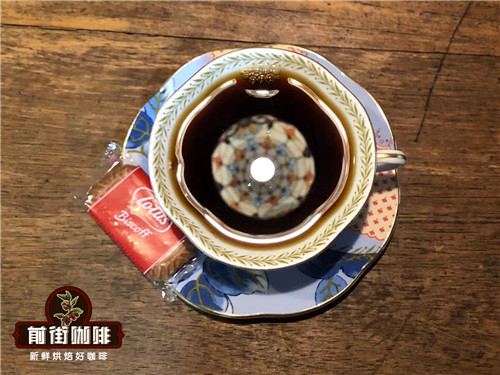
Bourbon coffee powder bourbon
Pink bourbon, as its name implies, its coffee cherries are romantic pink when ripe. It is a very rare new variety, which is bred by the cross between red bourbon and yellow bourbon.
Taste characteristics: sweet orange, sweet sugarcane, pleasant juice, small tomato
A variety of bourbon-- pointed body bourbon
Pointed Bourbon (Bourbon Pointu): found in Bourbon Island in 1810, beans changed from round to pointed, with only half the caffeine content, but in small amounts, weak and extremely precious (mostly cultivated in the laboratory).
Bourbon Pointu has two other names, Laurina and Leroy, but neither is as loud as the first name. The reason why it is called sharp bourbon is that the bean shape is long and narrow and both ends are pointed, while the native species bourbon (some call it round bourbon) has a shorter bean body and a slightly oval outline.
Flavor description: bright sour taste, blueberry, vanilla smell, velvety smooth
Bourbon variety-- SL28, SL34
Kenyan "SL28" and "SL34": the bourbon line, screened and cultivated by French and British missionaries and researchers in Kenya in the early 20th century, has adapted to Kenya's high-concentration phosphate soil for a century, giving birth to Kenyan characteristics of sour elves. Top Kenyan coffee comes from these two varieties, but it loses its flavor when transplanted elsewhere.
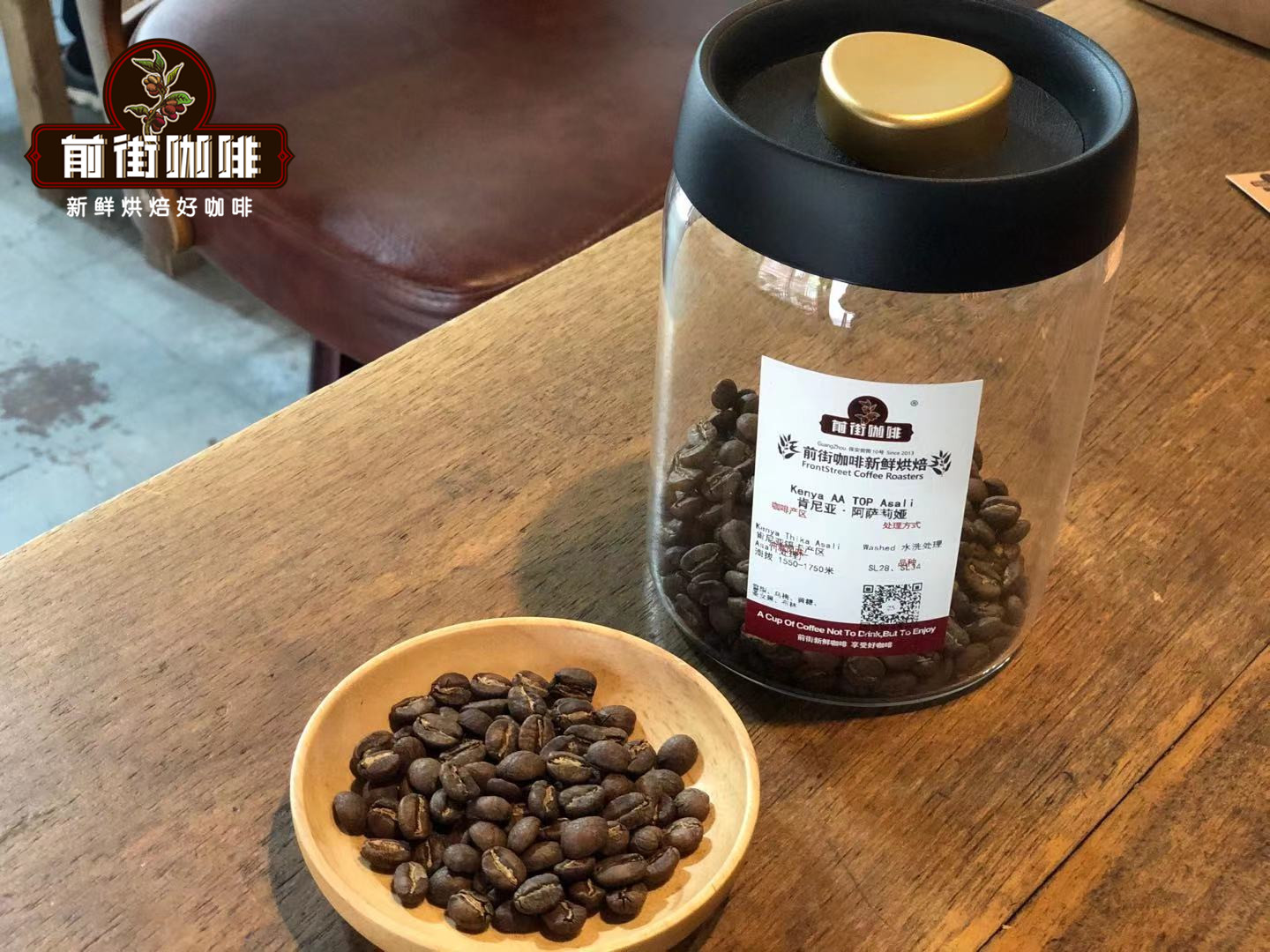
Qianjie coffee is brewed with Kenyan Asali AA TOP coffee to feel the flavor and taste brought by Kenyan SL28,SL34 varieties.
Producing area: Sika Thika, Kenya
Processing plant: Asali honey processing plant
Altitude: 1550mi 1750m
Rating: AA TOP
Variety: SL28,SL34
Treatment: 72-hour washing in Kenya
Cooking parameters:
Filter cup: V60 water temperature: 90-92 ℃ powder quantity: 15 g powder / water ratio: 1:15 grind degree: moderate grinding and cooking technique: staged extraction is steamed with 30 g water for about 30 seconds, 95 g water is injected around the center of small flow, that is, 125g water is sectioned, and when the water level drops, the water injection is continued to the end of 225g, and the filter cup is removed when the water level is about to expose the powder bed. (the time of steaming starts) the extraction time is 2: 39. 00 ".
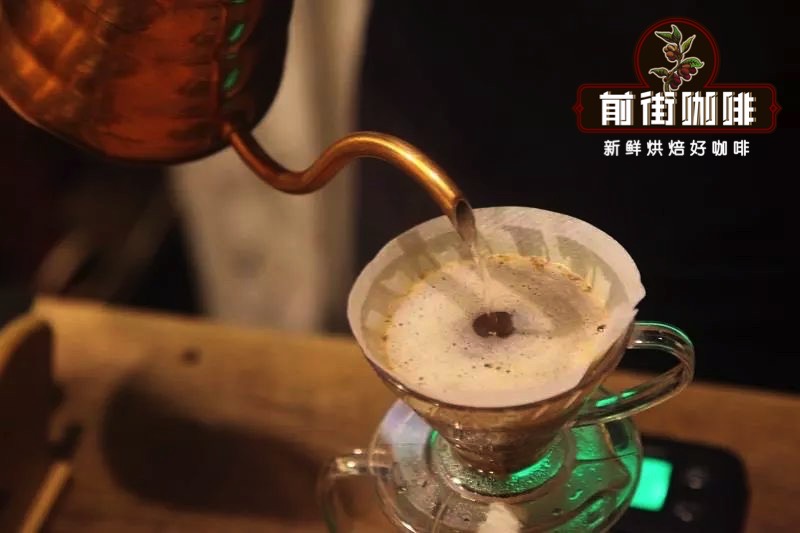
Cooking flavor: the mouth has the flavor of black plum and virgin fruit, the taste is strong sour, thick, middle sweet, juicy, aftertaste berry and yellow sugar sweet, and green tea aroma.
The coffee grade of Niya is divided into seven grades according to the size of coffee beans and six grades according to the taste. The best coffee in Kenya is bean berry coffee (PB), followed by AA++, AA+, AA, AB and so on. The fine coffee is shiny, delicious and slightly alcoholic. "Kenya AA" is particularly well received in terms of taste.
According to the size, shape and hardness of particles, they are divided into seven grades, including E, PB, AA, AB, C, TT and T.
Ermine E is Elephant, English "elephant", but here it does not refer to the elephant bean species in the breed. KenyaE requires more than 18 orders. E is a natural variation of two seeds in the process of growth. Generally, the yield is relatively small, and this grade of commodity is rarely seen in the Taiwan market.
PB: in English, it is called Peaberry, or cowpea or single pea. It is more than 15 mesh. Compared with ordinary flat beans, it is the most individual, unique, wide-roasted and most widely roasted coffee bean among many coffee PB beans, and it is also familiar to friends.
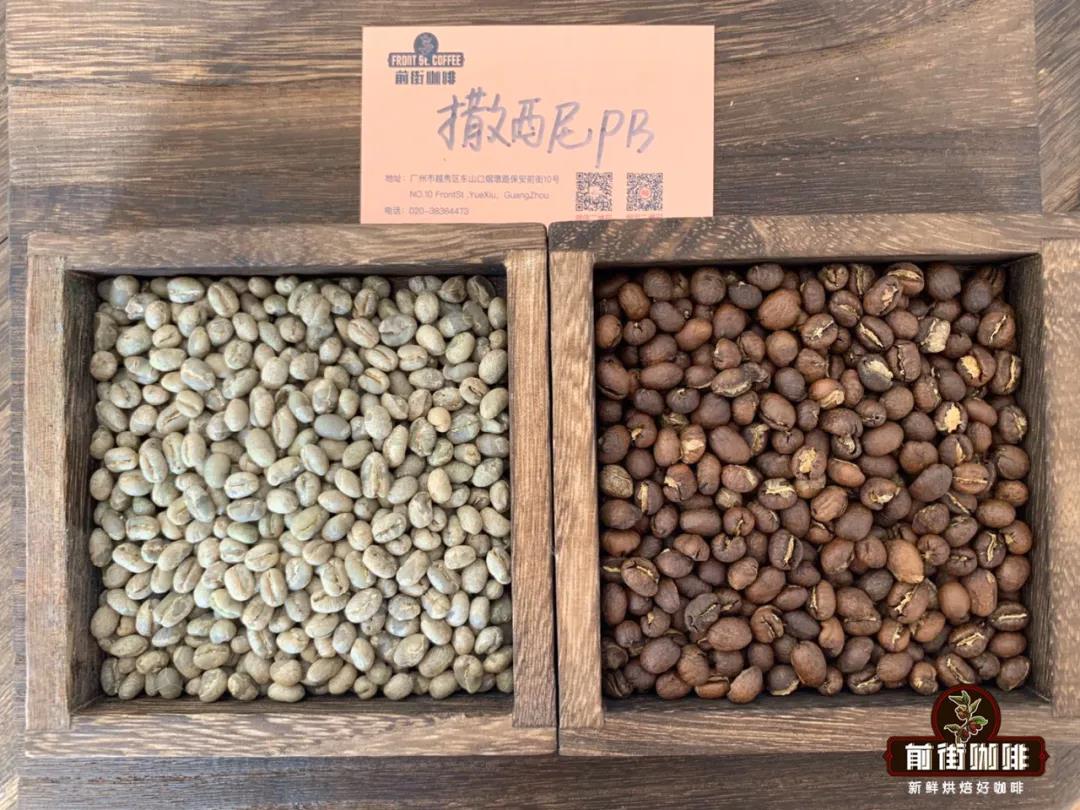
AA:KenyaAA granule size (Screen Size) is between 17 and 18 mesh, this grade of coffee is more affordable and is the most common coffee grade.
AB:KenyaAB particle size in 15-16 mesh, is a mixture of An and B, because the two will be mixed to sell, so it is called AB, the general coffee harvest has more coffee belong to this level.
C: the grain size is 12-14 mesh, which can be regarded as a small grain of beans.
TT: it means soft beans. TT is a light bean selected from AA and AB by air separation machine. Its hardness is not up to standard and is usually defective beans.
T: the particle size (Screen Size) is less than 12 mesh, usually leaving only debris, defective beans, and small beans less than 4.8mm.
Bourbon Variety-Kaddura
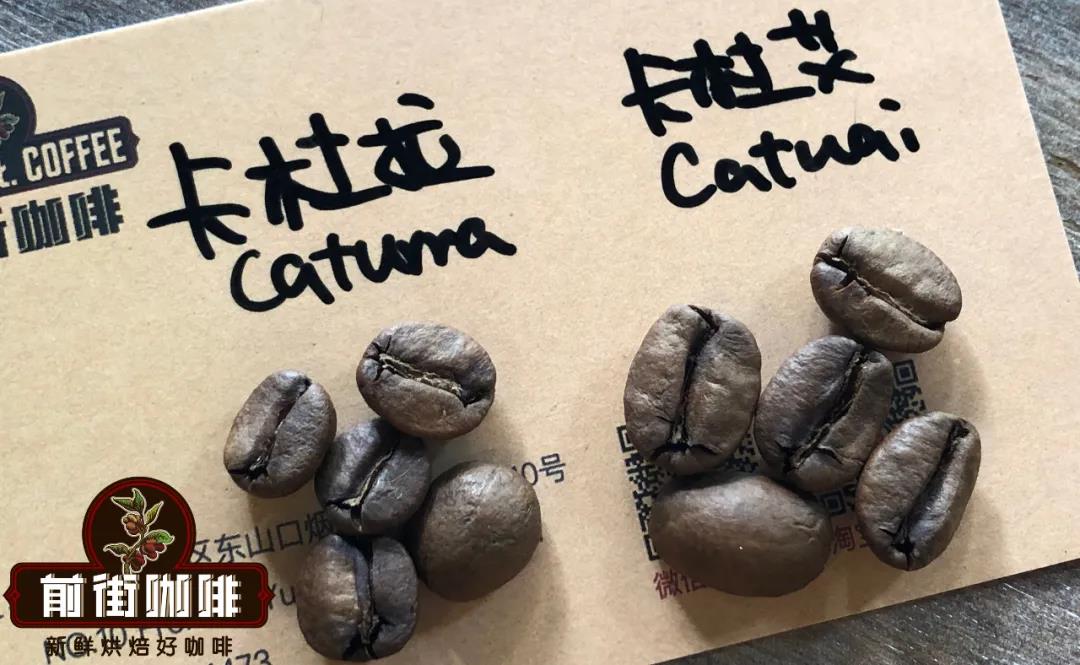
Caturra: it is a single gene variant of bourbon found in Brazil in the 1950s. It has better yield and disease resistance than bourbon. The tree is shorter and easy to harvest. Unfortunately, it has the same problem as bourbon-- as a result, it has a year off, and the flavor is equal to or slightly worse than bourbon beans.
But it is more adaptable, can be planted with high density, does not need shade trees, and can be vibrant in direct exposure to the sun, so it is also called "exposed coffee" (Sun Coffee).
Kaddura is suitable for high altitude areas from 700m to 1700 m, but the higher the altitude is, the better the flavor is, and the bean yield is relatively reduced. There are also variants of yellow Kaddura in Central and South America, but the wind rating is not as good as Huang bourbon.
Bourbon variety-- Kaduai
Catuai: Kaduai is a hybrid of New World and Kaddura. It inherits the advantage of Kaddura's low stature and makes up for the weakness of Arabica fruit. The result is solid, and it is not easy to fall when the strong wind blows. The biggest regret is that its overall flavor is slightly more monotonous than Kadura.
Kaduai also has the difference between red fruit and yellow fruit, and red fruit wins more often than yellow fruit. Kaduai, Kaddura, New World and bourbon are the four main varieties of coffee in Brazil.
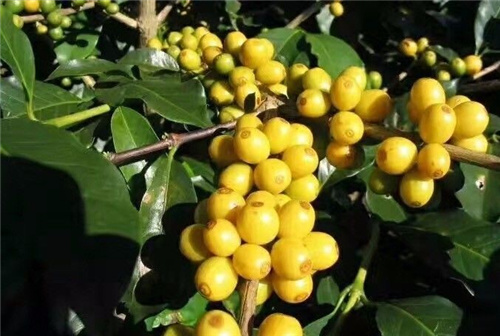
Bourbon Variety-Pacas
Pacas: a bourbon variety found in El Salvador. In 1935, the Salvadoran coffee farmer "Don Alberto Pacas" selected a high-capacity San Ramon bourbon variety to be planted on a farm. In 1956, his coffee tree produced more fruit than the same kind of coffee tree. Professor "Dr. William Cogwill" of the University of Florida identified this as a genetic mutation in bourbon and named it "Pacas".
Pacas, with its high output and good quality, is popular in Central America. Currently, 68% of El Salvador is bourbon, while Pacas has 29%. Similar to Kaddura of Brazil (Cuturrra) and Villa Sacrhi of Costa Rica. Pacas now accounts for about 25 per cent of El Salvador's coffee production, which is high and has always been popular. It produces coffee with high sweetness, similar to bourbon, but brighter sour taste than bourbon.
Bourbon Variety-- Vera Saatchi
The bourbon variety, which was first discovered in Costa Rica in the Villa Sarchi:1960 era, has often appeared in the cup test list of excellence in recent years, which can be described as a promising dark horse. This is a rare variety bred through the cross of red bourbon tree species. Strong wind resistance, preference for high altitude environment, excellent acidity and a variety of fruit aromas, high sweetness, bright and delicate citrus acidity and low raisin and nut aromas, high complexity and full balance. It is also a dwarf bourbon, found in the village of Saatchi in the western valley of Costa Rica, suitable for high-altitude organic cultivation, lively fruit acid and obvious caramel flavor.
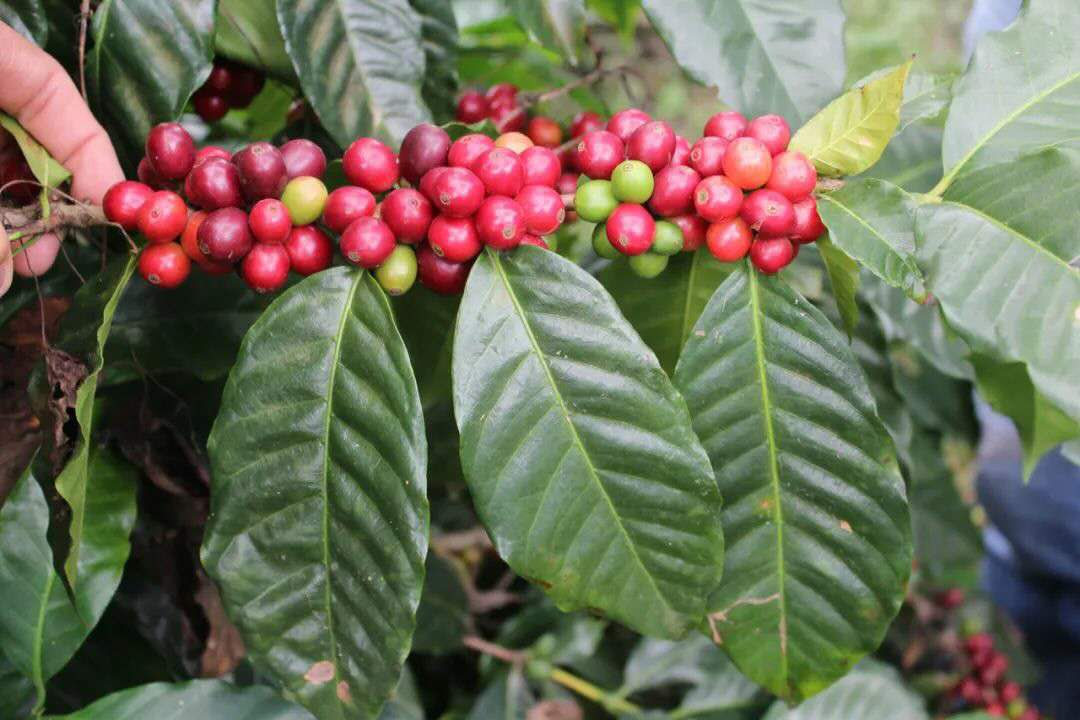
Hybrid Variety-- New World
Mundo Novo: a natural cross between Bourbon and Sumatra Tibica, first found in Brazil. Because of its high yield and resistance to diseases and insect pests, it was widely planted in Brazil in the 1950s and was praised as the new hope of the Brazilian coffee industry, but the trees were tall and difficult to harvest.
Hybrid variety-- Niga Java
The Javanese species of Nicaragua is a long-grained species that is rare in Java today. The lemon tree manor was sown successfully in Nicaragua for the first time. Java provenance comes from Tiebika seed system. Tibica in Java had a serious outbreak of leaf rust, which led to the almost extinction of Tibika in Java, while the lemon manor inadvertently got a bag of seeds and asked experts to identify the young plants after sowing seedlings. Only then did I know it was a Javanese species. Lemon tree first participated in COE with this variety in 2007, but it won the runner-up of Nicaragua COE that year, and the bidding price even exceeded the champion of that year.
Hybrid variety-Mara Kadura
The hybrid between elephant bean and Kaddura (Maragogypepe × Caturra) cultivated in Guatemala received higher recognition after Nicaragua COE won the championship in 2009. With rich fruit like beans and elegant acidity of Kaddura, it has high mellow thickness, full floral aroma and high sweetness.
Arabica species-Geisha / Rosa
Rose summer, Geisha, because the pronunciation is the same as Japanese geisha, so there is another name "geisha coffee". Compared with Blue Mountain Coffee, Hawaiian Coffee and Manning Coffee, Geisha Coffee has more rich and diverse flower and fruit aromas and strong sweetness of tropical fruits. Geisha coffee raw beans have become the "star" pursued by many coffee fans because of their high-quality and unique coffee flavor. Once you drink such a coffee, you may have the idea of not drinking non-rose coffee.
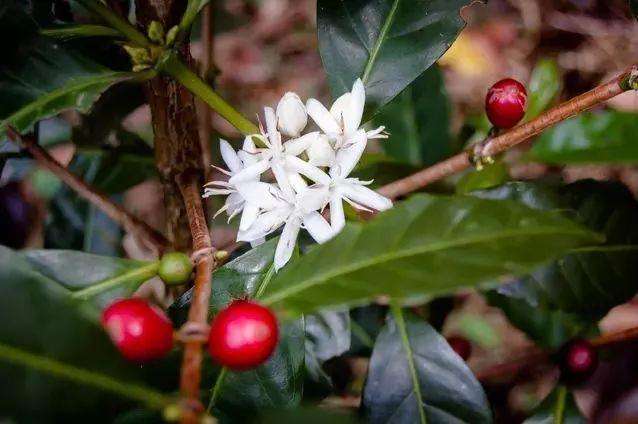
The rose seed was first discovered in the Gori Gesha forest and became famous at the Panama Coffee Competition in 2004.
Geisha is the champion of coffee varieties, which is fascinating both in flavor and taste, which is one of the reasons why Rosa Coffee is unforgettable and famous. In addition, Rosa Coffee has a high praise of more than 90 points in boutique coffee, so it is not easy to drink top Rosa beans in the market.
Rose summer, Geisha, because the pronunciation is the same as Japanese geisha, so there is another name "geisha coffee". Compared with Blue Mountain Coffee, Hawaiian Coffee and Manning Coffee, Geisha Coffee has more rich and diverse aromas of flowers and fruits, and the sweetness of tropical fruits is distinct. In the eyes of coffee people, Rose Summer is undoubtedly a well-deserved goddess. How many people are infatuated with her bright and complex flower and fruit aroma, multi-level high sweetness of fruit tonality and delicate softness and acidity.
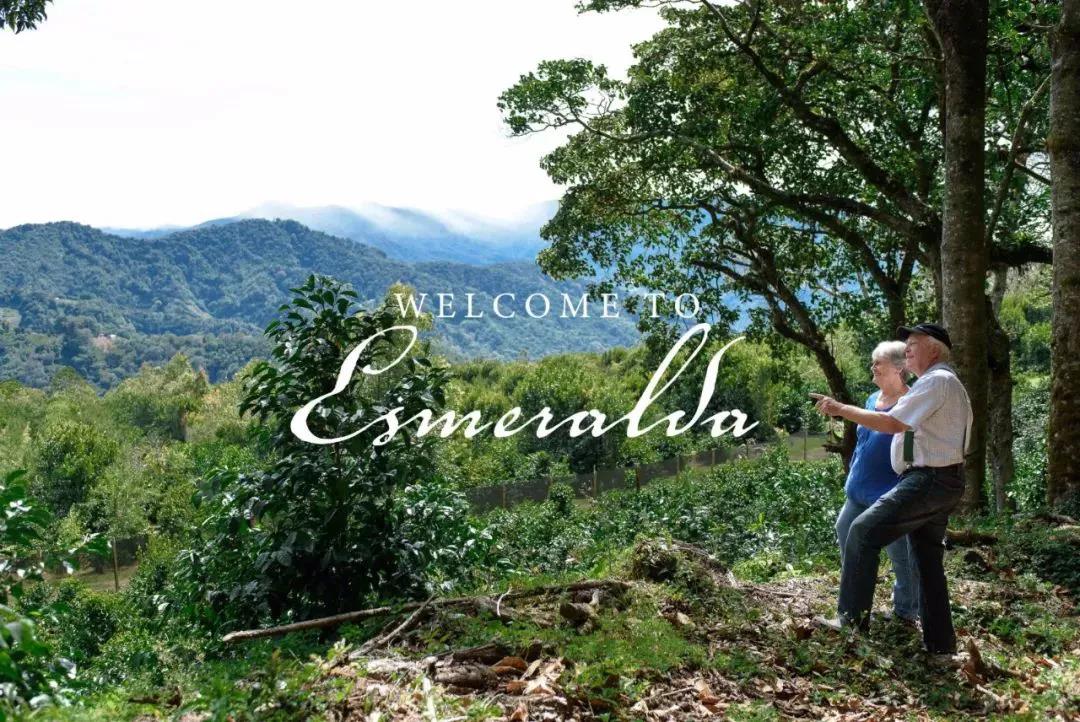
At present, the best-known origin of Rosa Rosa is in the Pokuit region of Panama, a small city at the eastern foot of Mount Baru. The most famous rosy summer coffee plantations in Poquet are the famous Emerald Manor (La Esmeralda), Arida Manor Elida Estate and Panamanian NPGE Manor. Although Rosa Coffee is grown all over the world, even in Taiwan, the flavor is not as amazing as that of Panama.
The rose summer grade of Panamanian jadeite manor is divided into three categories: red mark, green mark and blue mark.
There are three major differences among "red standard", "green standard" and "blue standard":
Red Standard Rose Summer (ESMERALDA SPECIAL)
Red bid is the top Rosa coffee, also known as bidding beans, because the coffee can only be sold through annual Internet auctions, usually participating in global auctions in May every year. Red standard rose summer planting altitude of 1600-1800 meters, cup test results as high as more than 90 points, each cup test competition belongs to the king, so coffee is expensive and very rare.
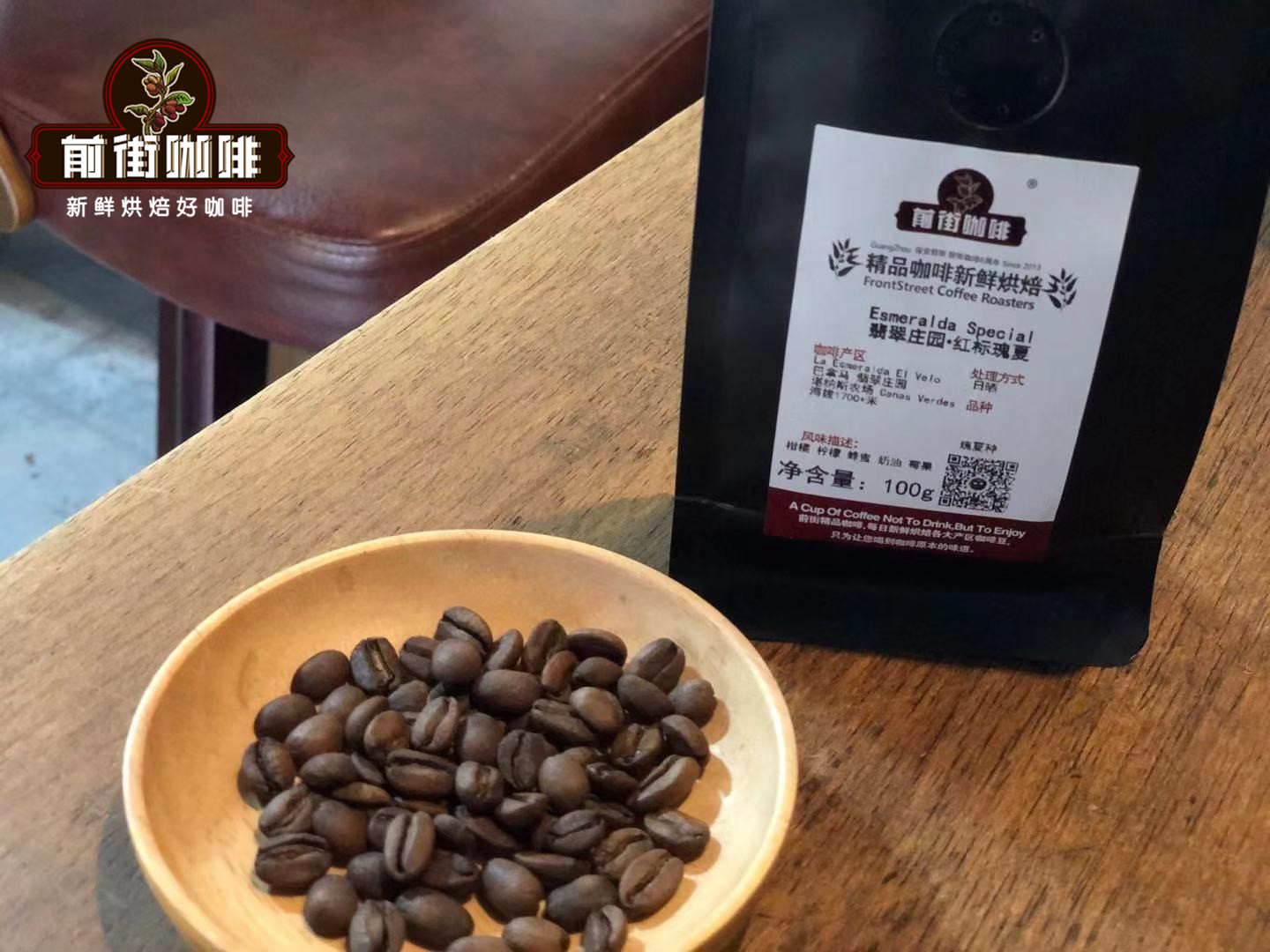
Coffee flavor with rose and citrus aromas, with a thick sense of juice, sweet and obvious.
Green label Rose Summer (Boquete Geisha)
Green standard is secondary rose summer coffee, generally do not participate in bidding, but the quality of coffee also belongs to high-quality coffee beans, the price is slightly cheaper, is the private collection of jadeite manor rose summer, selected from 1500 meters above sea level rose summer varieties.
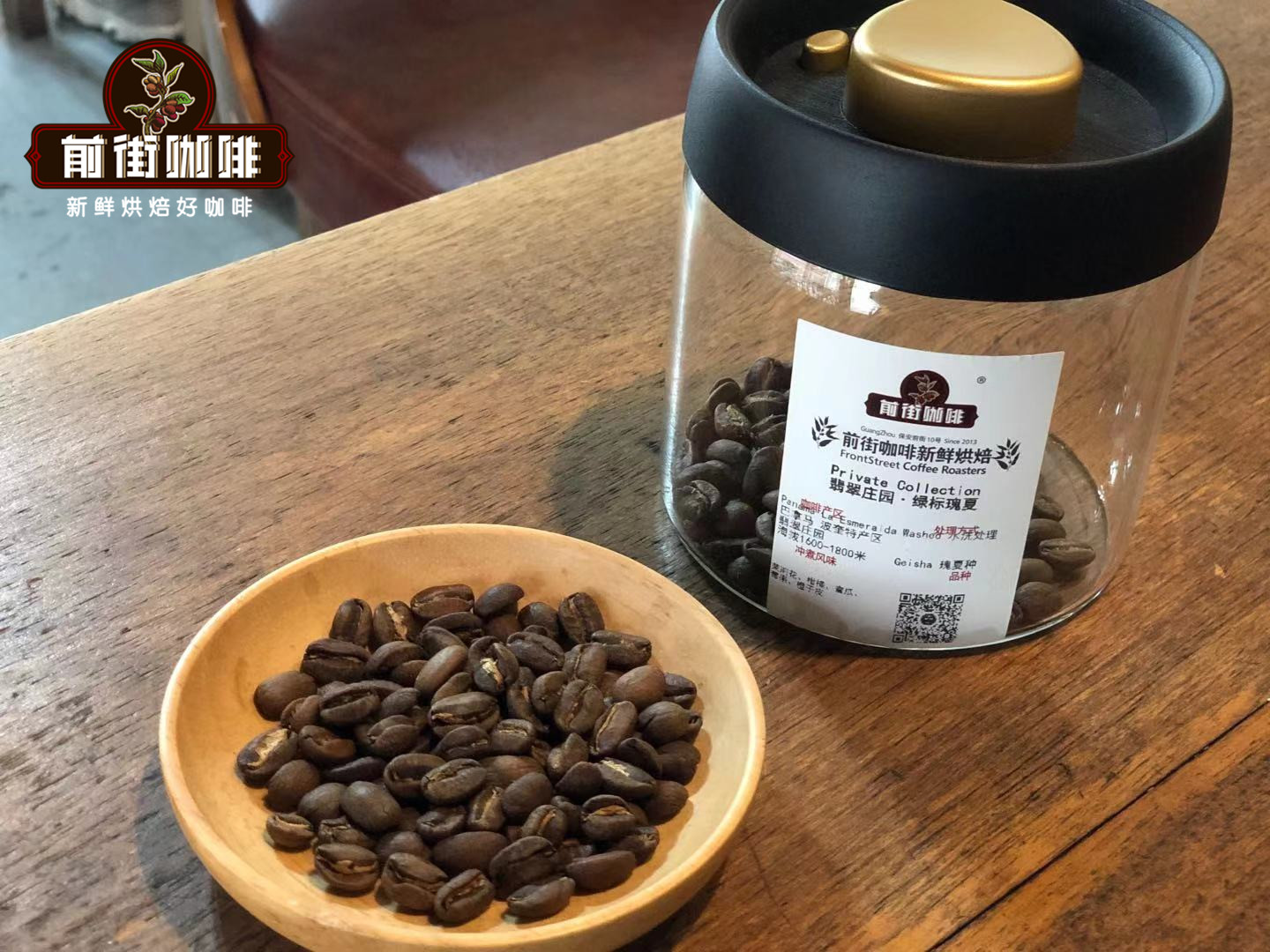
Coffee flavor with the classic flavor of Rosa coffee beans, floral, fruity, citrus sour, thick and juicy taste.
Blue label Rose Summer (ESMERALDA)
Blue standard is an ordinary rose summer coffee, which is the daily mass production of Jade Manor. It is selected from the rose summer varieties at an altitude of about 1500.
The flavor of coffee is slightly floral, sour and sweet, and the taste is not thick.
The overall flavor of Panamanian coffee has a strong aroma of citrus, jasmine and honey, with obvious acidity on the tip of the tongue, mild and round in the mouth, sweet with cereal and long-lasting charm.
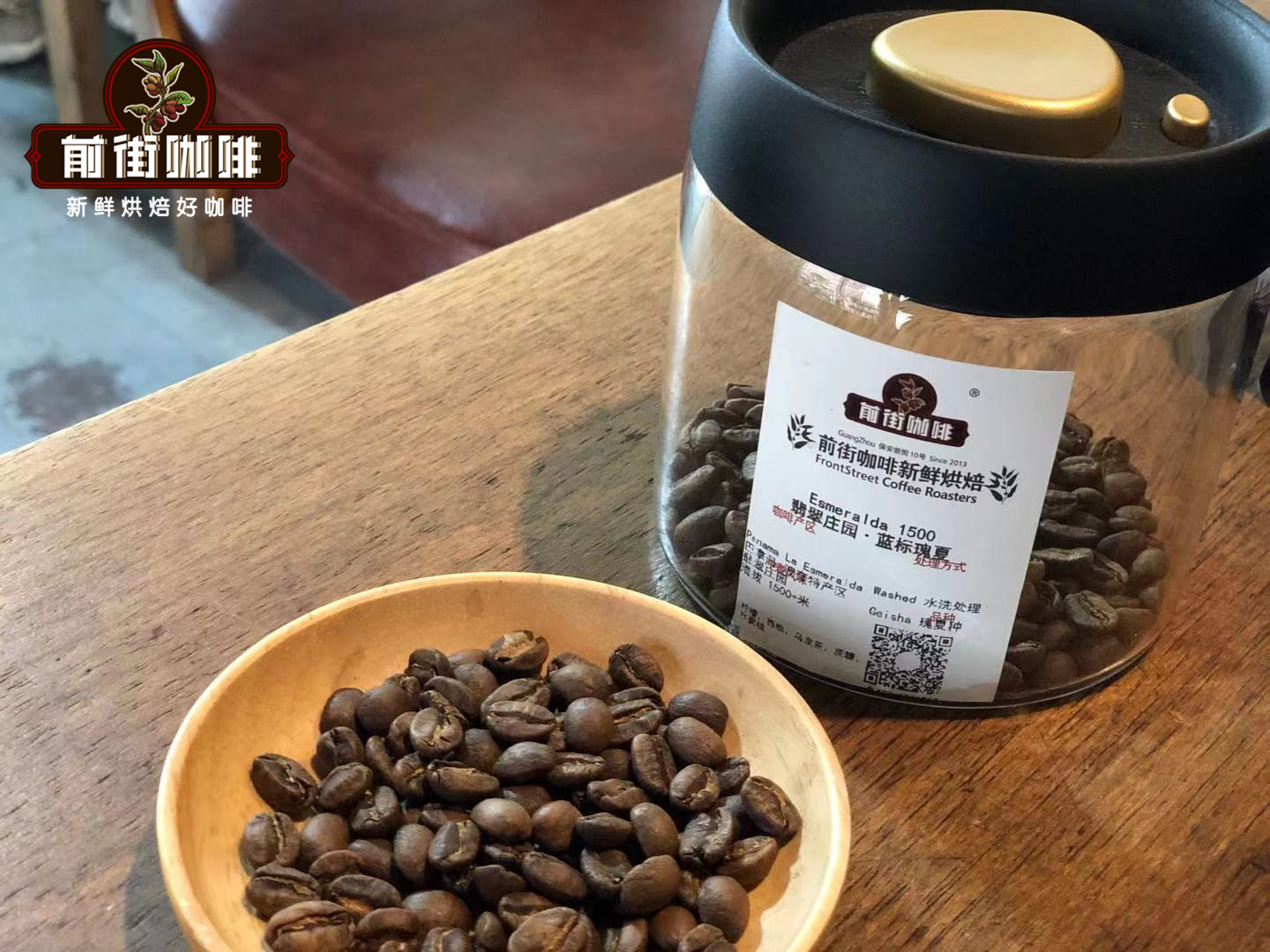
Qianjie coffee is brewed with Panamanian blue standard rose summer in the latest season.
Panama Blue Standard Rose Summer in 2020 New production season
Producing area: Pokuit
Manor: Jade Manor
Altitude: 1500m
Variety: Rose summer
Treatment method: washing treatment method
Cooking parameters:
Filter cup: V60 water temperature: 90-92 ℃ powder quantity: 15 g powder / water ratio: 1:15 grind degree: moderate grinding and cooking technique: staged extraction is steamed with 30 g water for about 30 seconds, 95 g water is injected around the center of small flow, that is, 125g water is sectioned, and when the water level drops, the water injection is continued to the end of 225g, and the filter cup is removed when the water level is about to expose the powder bed. (the time of steaming starts) the extraction time is 2: 39. 00 ".
Cooking flavor: light jasmine and citrus aromas, with obvious citrus and black plum in the mouth, fresh and bright acidity, nuts in the middle, honey sweetness and lasting sweetness in the finish.
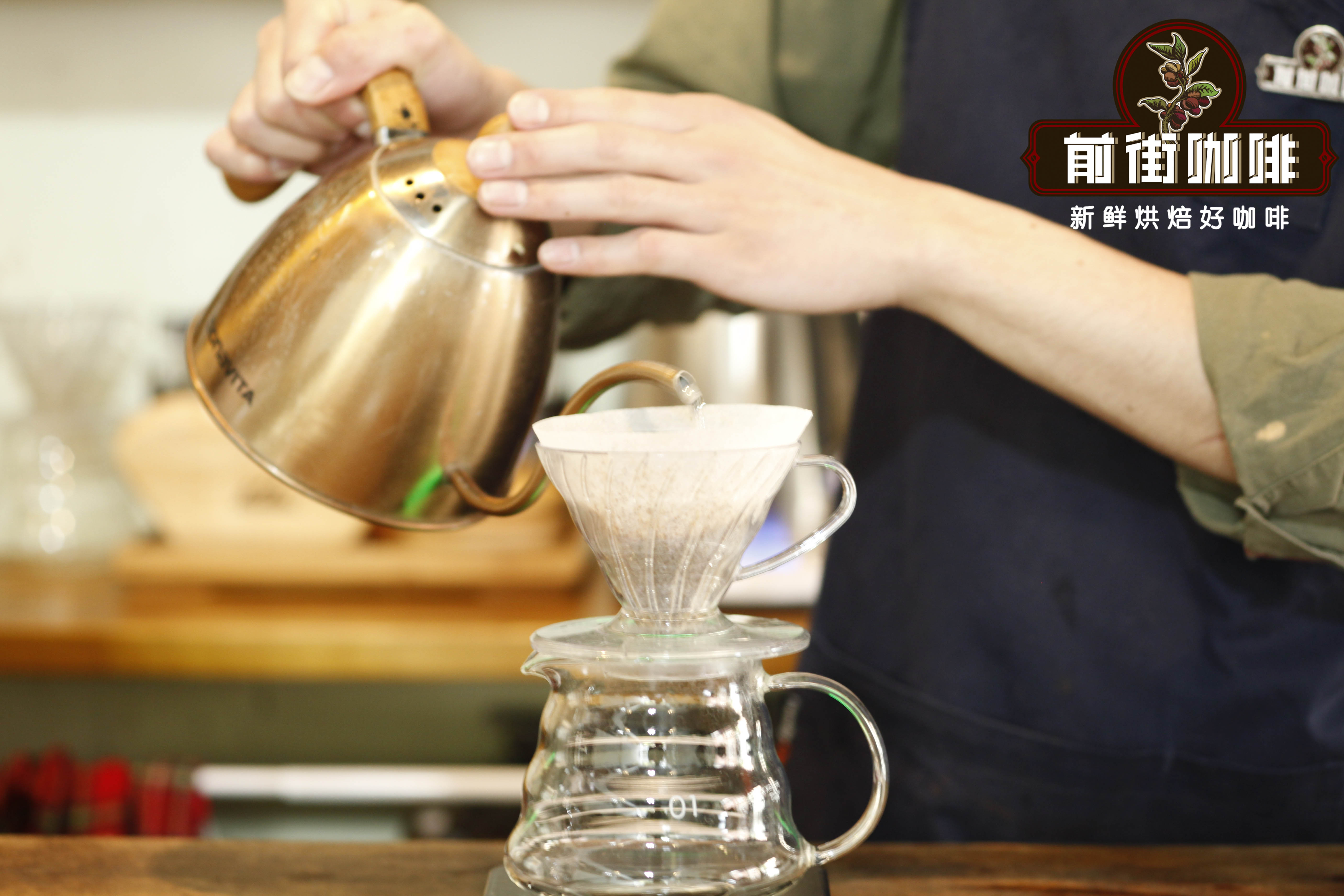
Hybrid between Arabica and Robbosa bean (Interspecific Hybrid)
Hybrid variety Timo
Timor: a natural hybrid found in East Timor, an island country at the eastern end of the Nusa Tenggara Islands, with 44 chromosomes close to Arabica, but with a mediocre flavor, Timo's low acidity and lack of characteristics, it is often used as a low-cost formula in Taiwan. However, East Timor also has high-altitude pure Tibica treated with water. Before buying, it is important to find out whether it is a hybrid or a purebred iron card water washed beans, the quality of the two is very different, the former is mediocre, and the latter is amazing.
Hybrid variety-- Katimo / Katim
In Catimor:1959, the Portuguese mixed Brazilian Kaddura with Timo and bred the second generation of Cartimo, which has strong disease resistance and yield capacity. But the flavor is also poor, and it is an important variety of commercial beans at present. In recent years, botanists from all over the world have turned to the interaction between Arabica and Katimodo in an attempt to reduce the pedigree of Luodou in order to improve the bad reviews of the Katimo Cup.
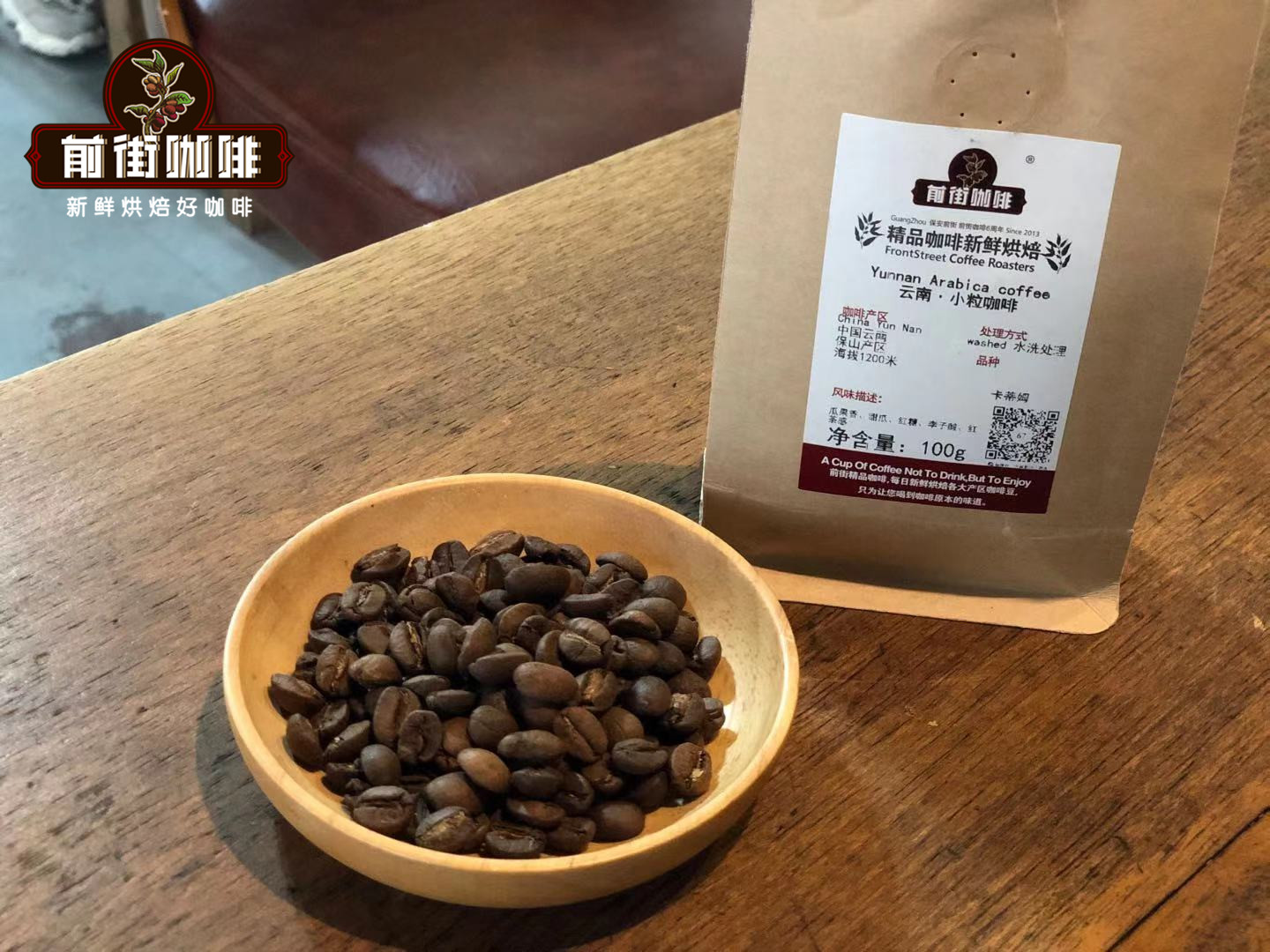
Hybrid variety-- Ikatu
Icatu: many generations of Brazilian hybrid improved varieties, has been in the Brazilian "extraordinary Cup" top 10. In the past, Arabica mixed with turnip beans Arabusta "Arabusta", although increased yield and disease resistance, but the coffee flavor has not been good. Scientists crossed Arabica varieties with Arabica varieties such as Kaddura, New World and Bourbon for many generations, which gradually reduced the bad smell of radish beans and improved the aroma of Arabica beans, thus giving birth to an excellent variety of multi-generation hybrids-Icato.
Hybrid variety Ruyilu 11
Ruiru 11: a hybrid breed with heavy yield and low quality developed in Kenya in 1985. There are no varieties of Arabica and sturdy beans that can be regarded as boutique coffee so far, so they are not available in many suppliers that specialize in freshly roasted boutique coffee, such as fresh. Ruiru coffee varieties do not produce much, although they currently account for only 10% of Kenyan coffee, but Ruiru coffee is often sold with SL28/SL34.
For more boutique coffee beans, please add private Qianjie coffee on Wechat. WeChat account: kaixinguoguo0925
Important Notice :
前街咖啡 FrontStreet Coffee has moved to new addredd:
FrontStreet Coffee Address: 315,Donghua East Road,GuangZhou
Tel:020 38364473
- Prev

How many kinds and flavors of espresso are there? What kind of coffee do you have in the coffee shop?
Professional coffee knowledge exchange more coffee bean information Please pay attention to the coffee workshop (Wechat official account cafe_style) the common types and names of espresso often have the opportunity to taste different coffee items in different cafes, whether it is espresso or handmade products, each has its own characteristics and attractions. At present, most of the common cafes in the market serve espresso, so
- Next
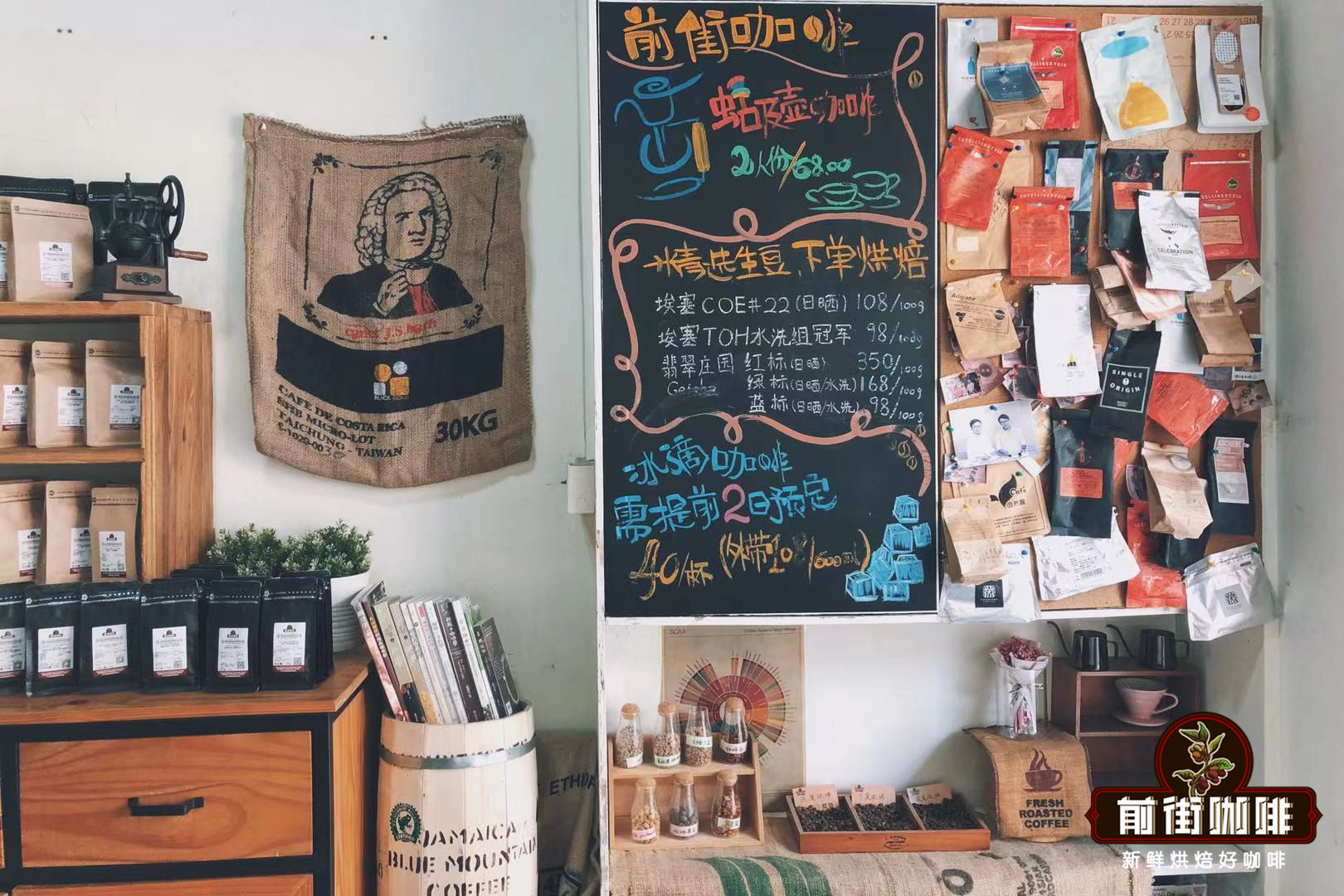
What kinds of black coffee do you have? There are several flavors and kinds of coffee commonly found in coffee shops.
Professional coffee knowledge exchange more coffee bean information please follow the coffee workshop (Wechat official account cafe_style) black coffee (black coffee), also known as black coffee, basically as long as there is no sugar, no milk coffee is called black coffee, but instant coffee is no longer this list, black coffee is coffee beans with caramel, after high-temperature carbon roasting, with bitter, sour, caramel and carbonization
Related
- Detailed explanation of Jadeite planting Land in Panamanian Jadeite Manor introduction to the grading system of Jadeite competitive bidding, Red bid, Green bid and Rose Summer
- Story of Coffee planting in Brenka region of Costa Rica Stonehenge Manor anaerobic heavy honey treatment of flavor mouth
- What's on the barrel of Blue Mountain Coffee beans?
- Can American coffee also pull flowers? How to use hot American style to pull out a good-looking pattern?
- Can you make a cold extract with coffee beans? What is the right proportion for cold-extracted coffee formula?
- Indonesian PWN Gold Mandrine Coffee Origin Features Flavor How to Chong? Mandolin coffee is American.
- A brief introduction to the flavor characteristics of Brazilian yellow bourbon coffee beans
- What is the effect of different water quality on the flavor of cold-extracted coffee? What kind of water is best for brewing coffee?
- Why do you think of Rose Summer whenever you mention Panamanian coffee?
- Introduction to the characteristics of authentic blue mountain coffee bean producing areas? What is the CIB Coffee Authority in Jamaica?

